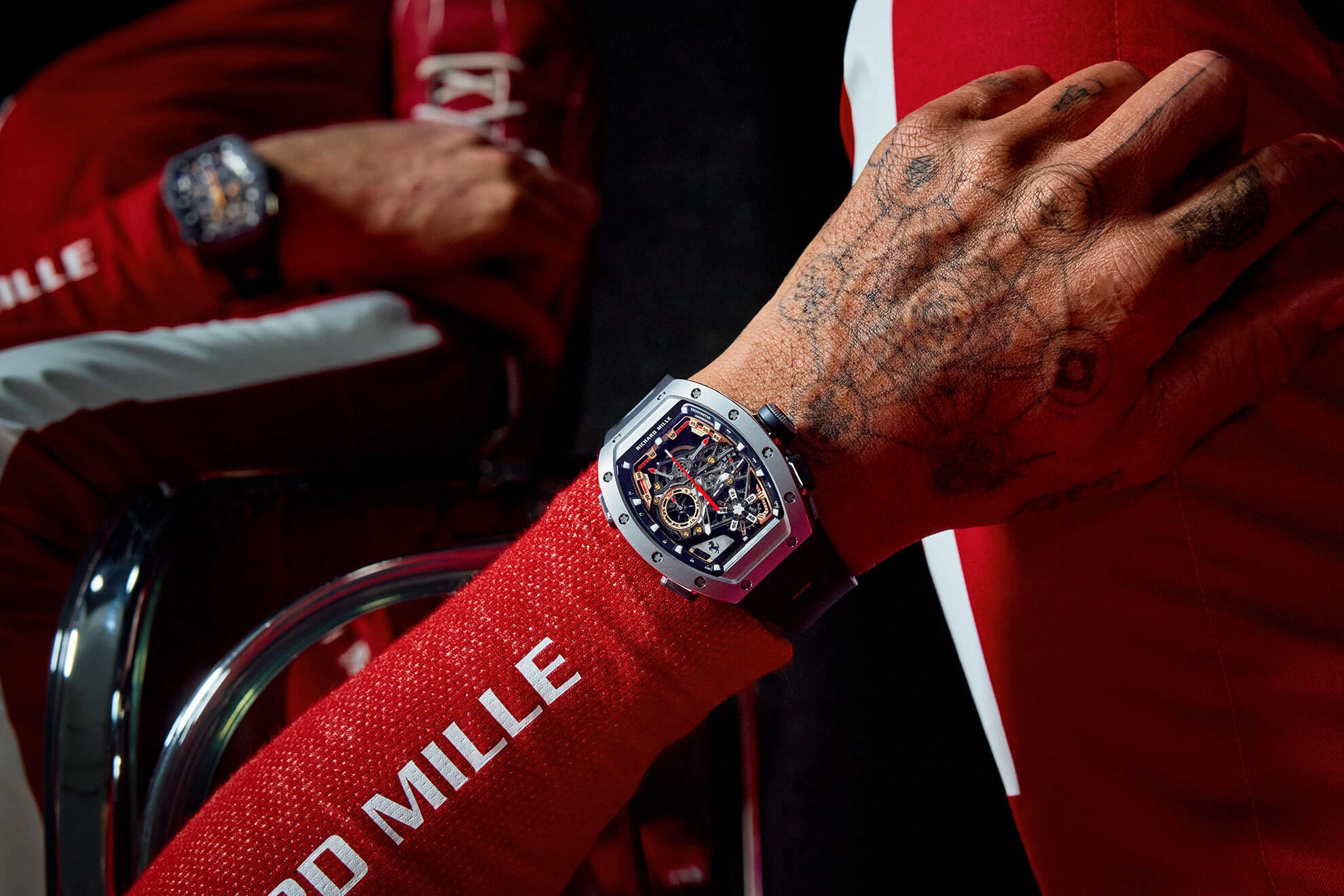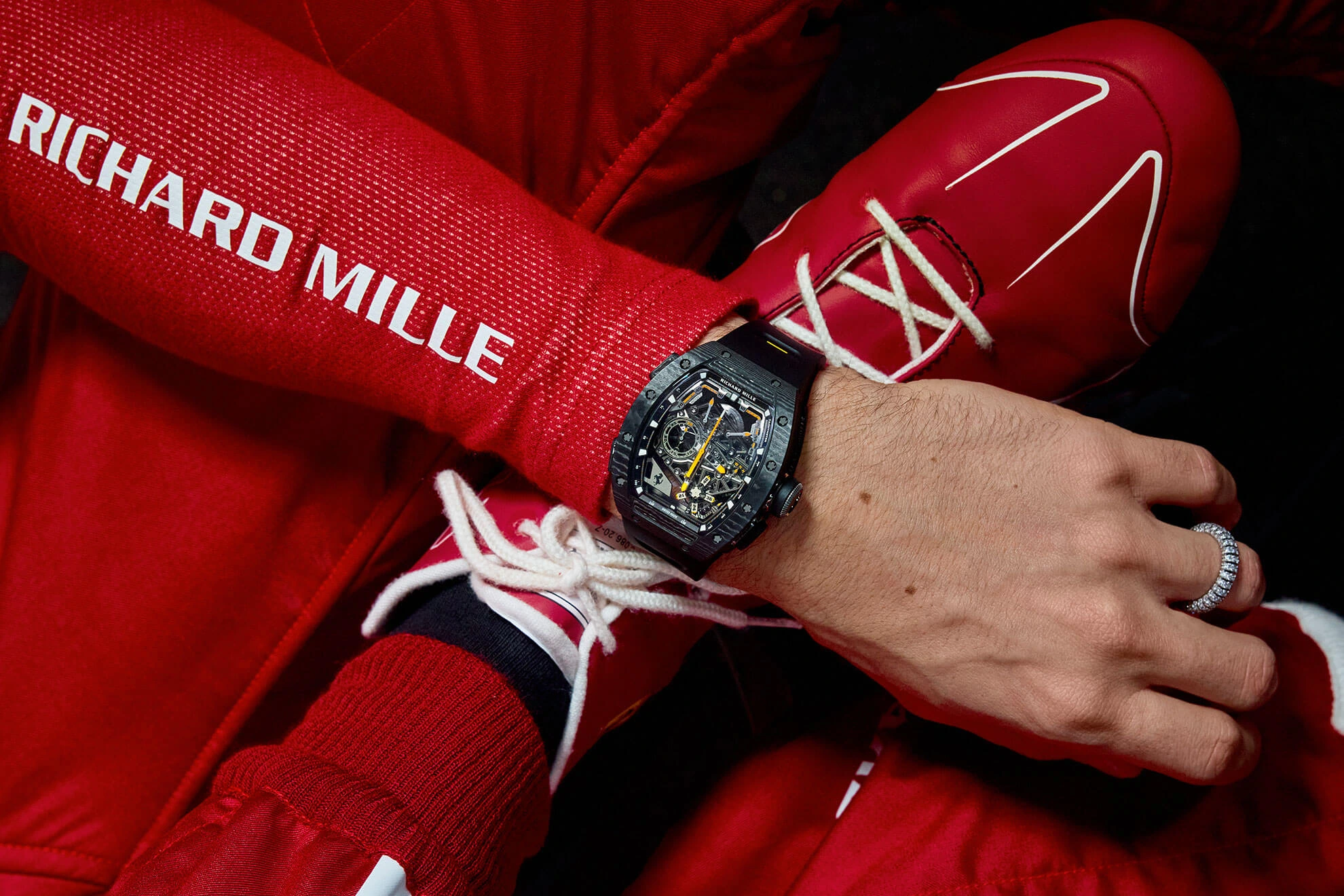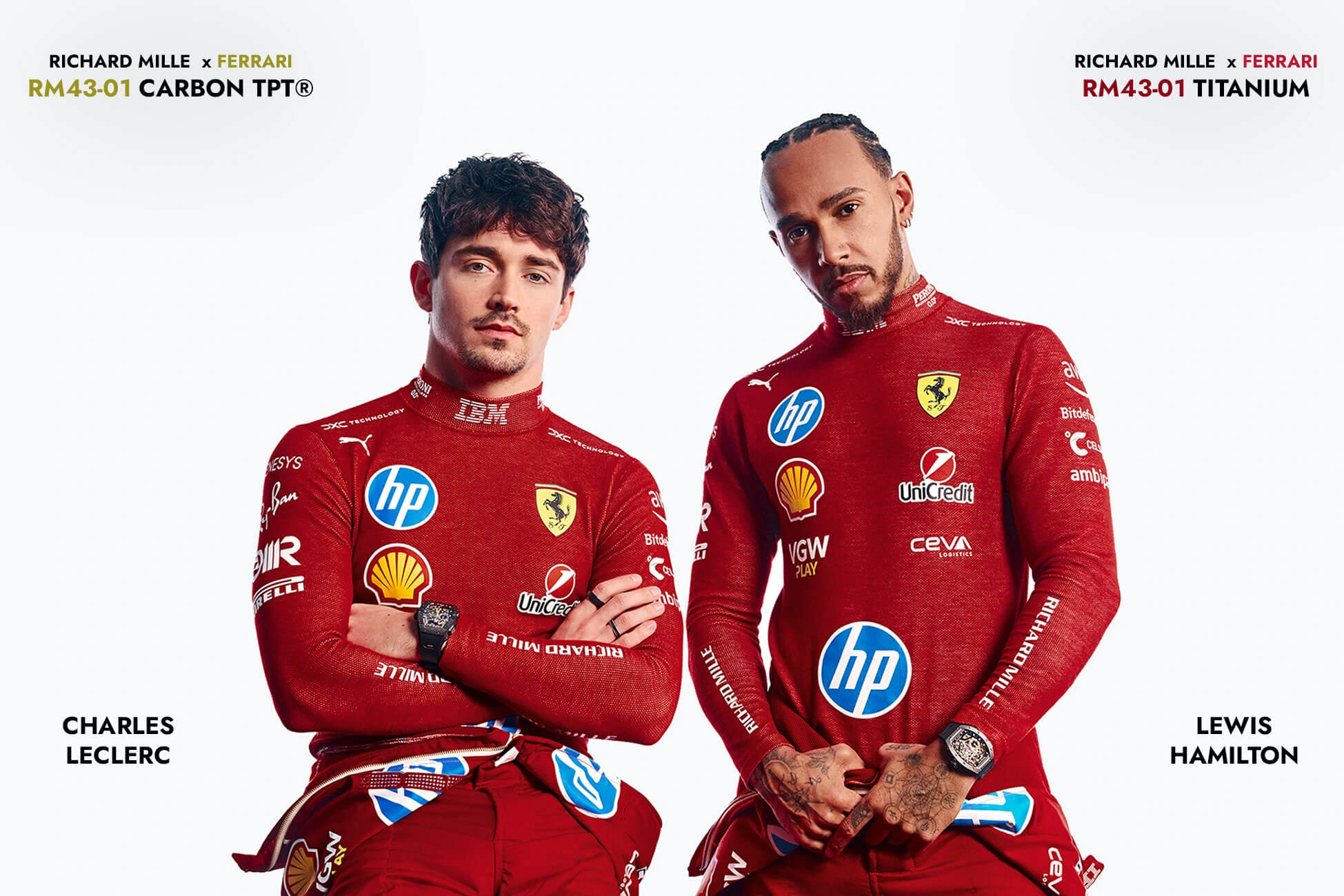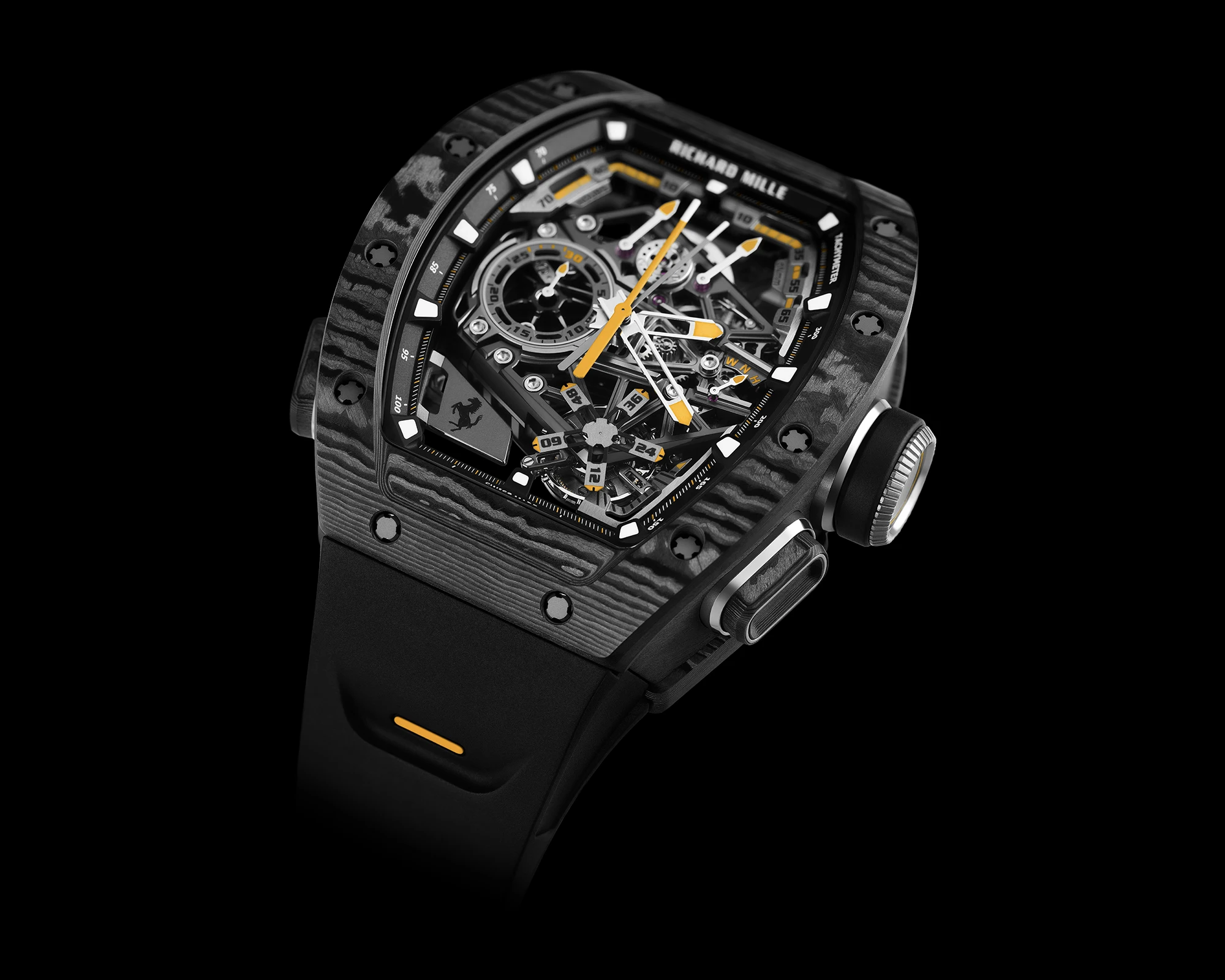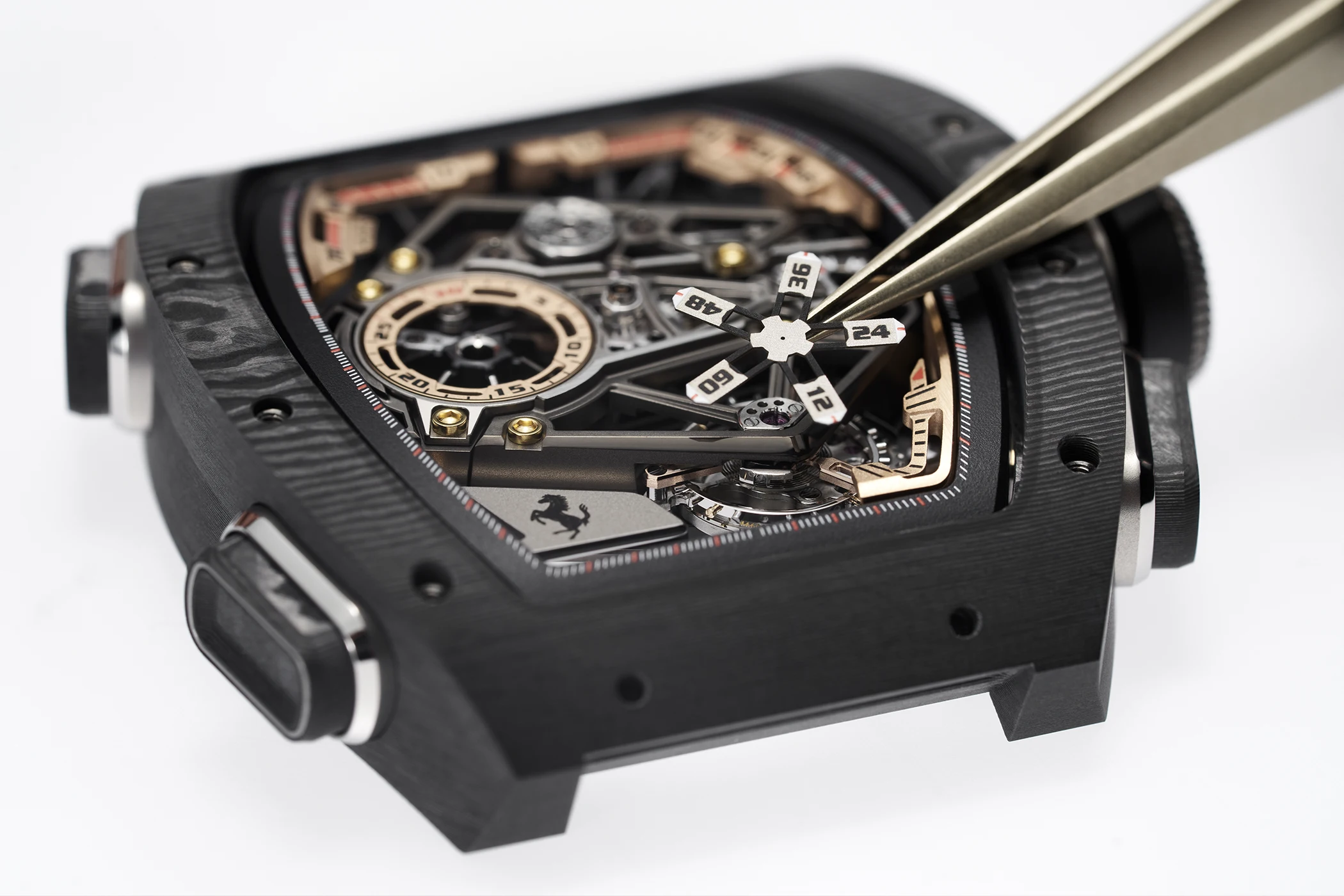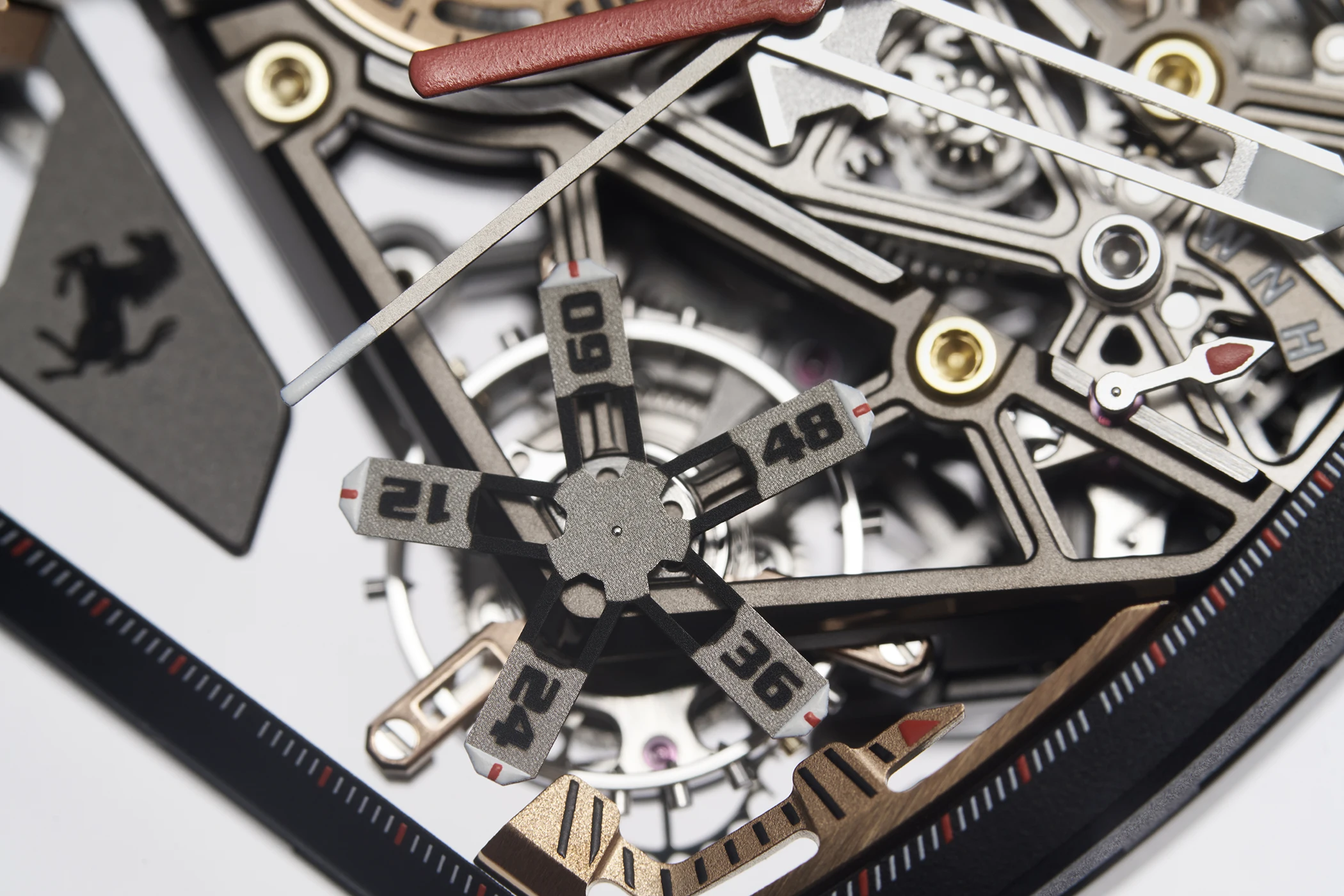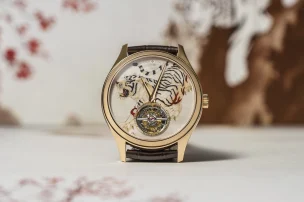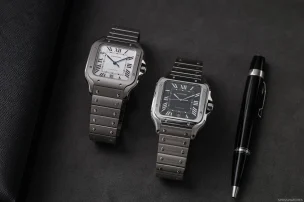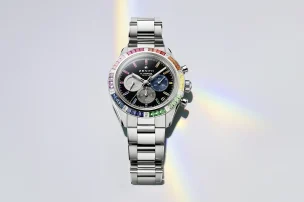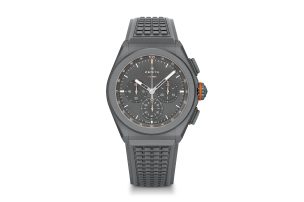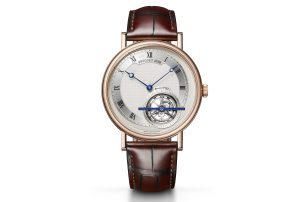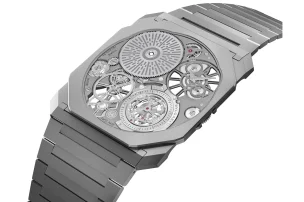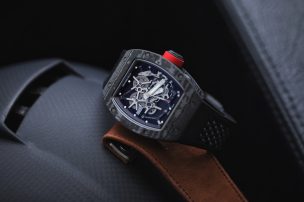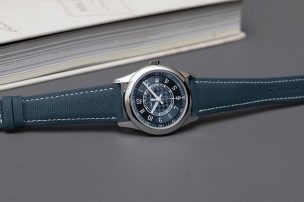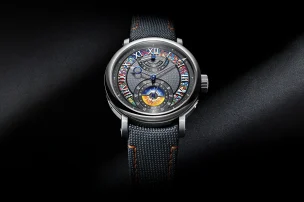
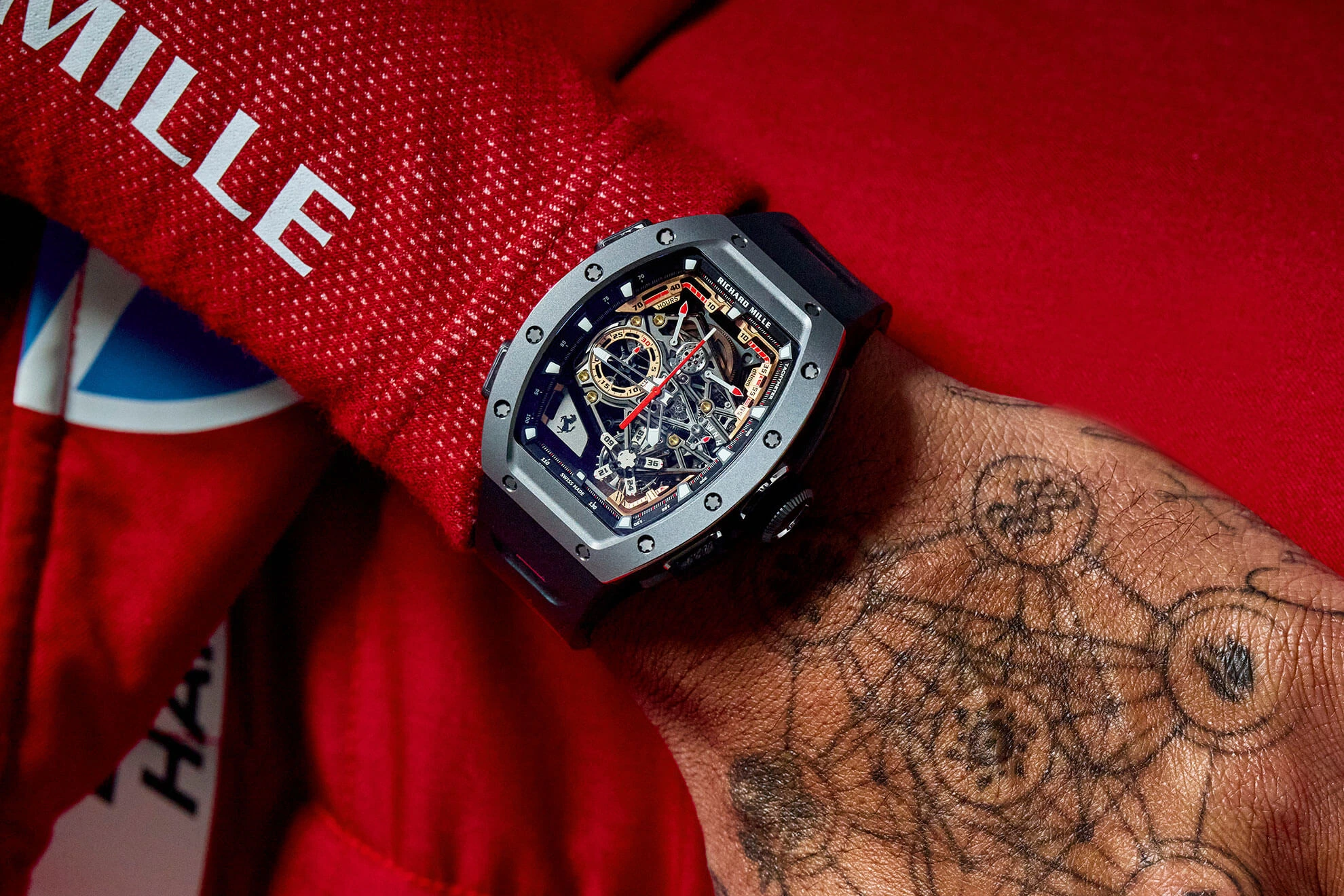
Richard Mille and Ferrari Take Their Collaboration to the Next Level with the RM 43-01 Tourbillon Split-Seconds Chronograph
Since 2021, Richard Mille and Ferrari have been working together — two companies both renowned for technical innovation, distinctive design, and exceptional performance. In 2022, this partnership produced its first creation: the RM UP-01 Ultraflat Ferrari, a watch with a case height of just 1.75 mm that captured the attention of both experts and watch enthusiasts alike. Now comes the second result of this collaboration: the RM 43-01 Tourbillon Split-Seconds Chronograph Ferrari.
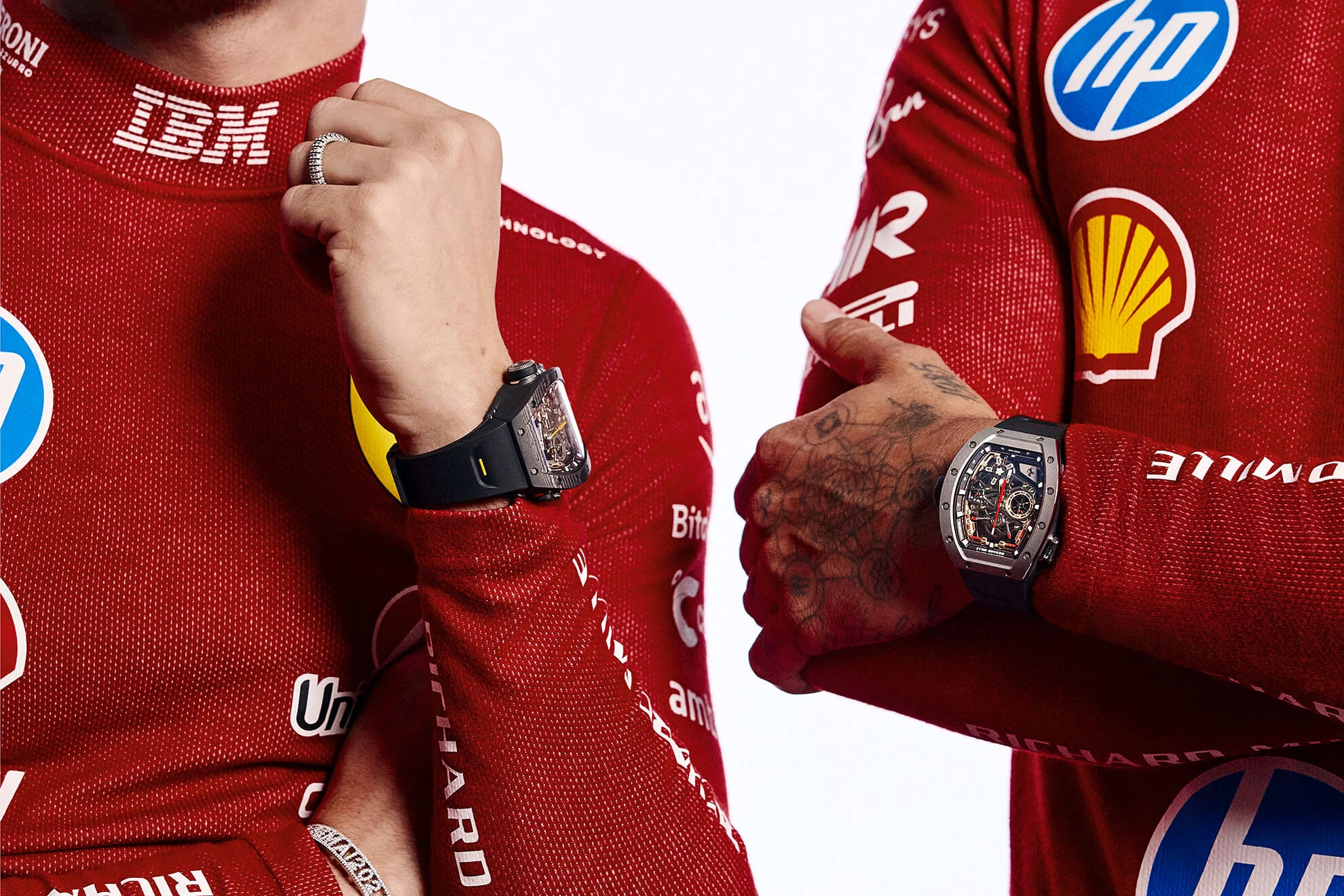
With this model, Richard Mille has reimagined one of its most technically demanding complications — the split-seconds chronograph with tourbillon — from the ground up. The outcome is the product of an intensive dialogue between Maranello and Les Breuleux, resulting in a timepiece that unites the technical expertise and ambitions of both brands. But what exactly lies behind this watch, which Richard Mille describes as the ultimate split-seconds chronograph with tourbillon? Here is everything you need to know about the latest chapter in the partnership between Ferrari and Richard Mille.
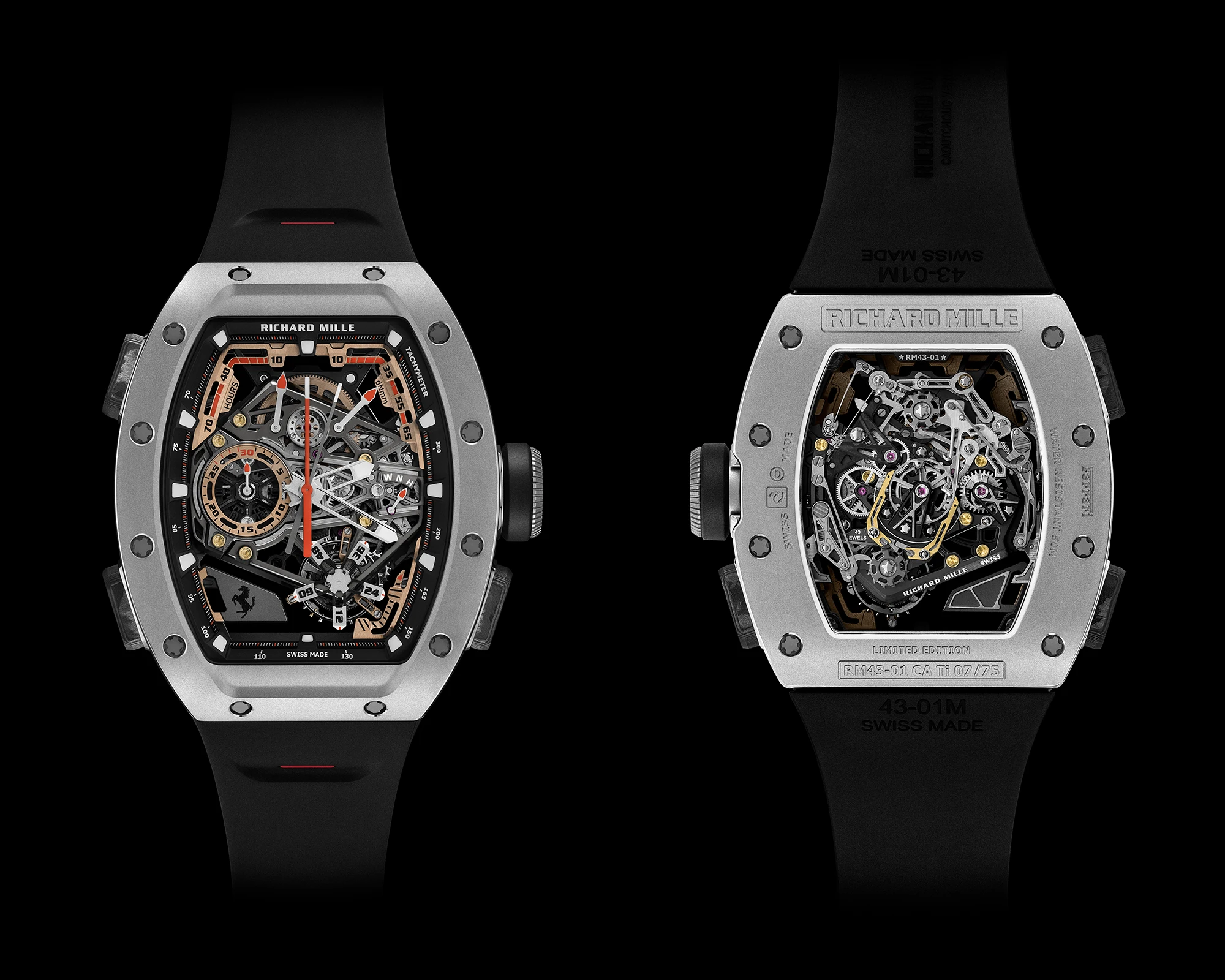
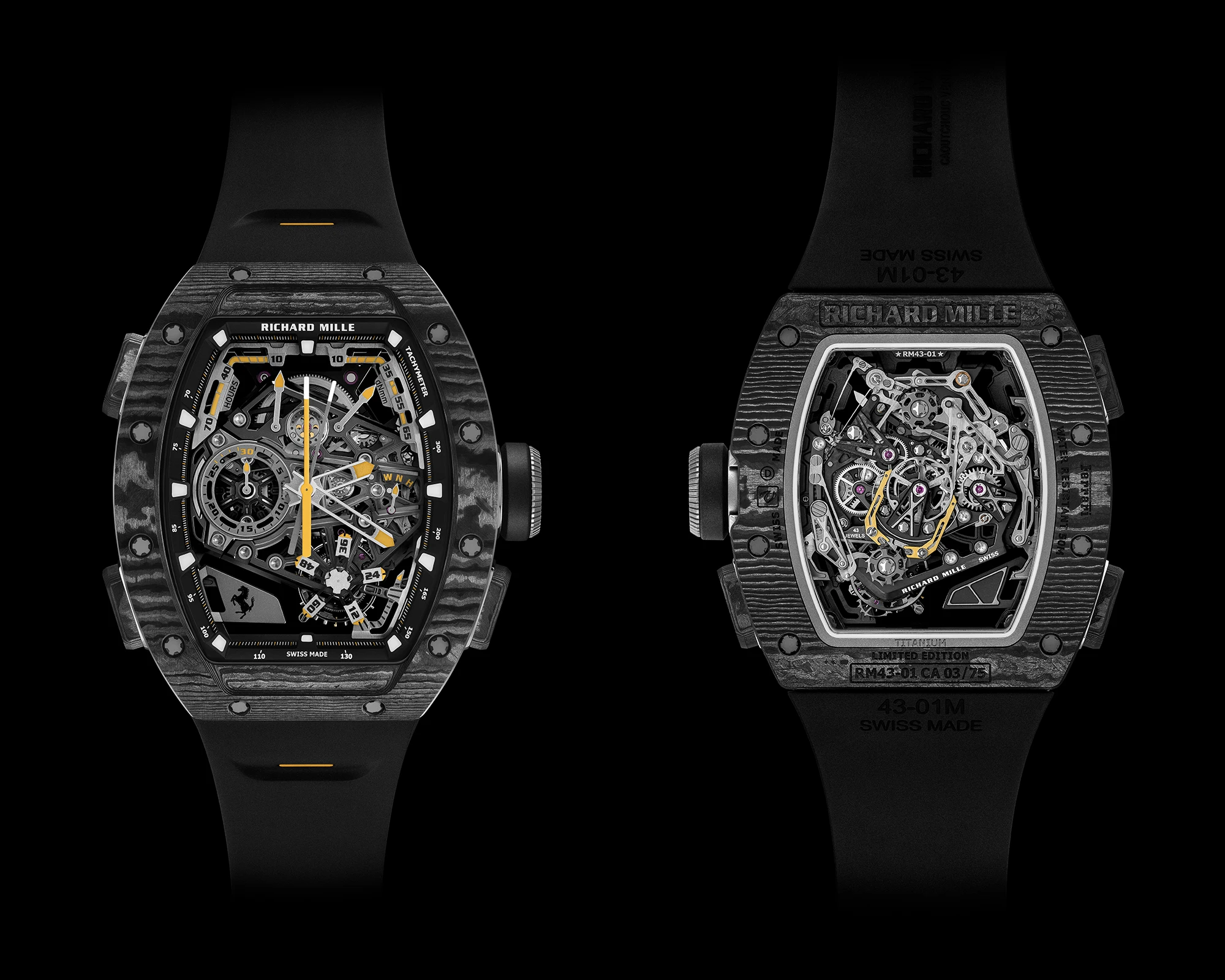
The Movement of the Richard Mille RM 43-01 Tourbillon Split-Seconds Chronograph Ferrari
The calibre RM43-01 was developed from the ground up over a three-year development process in collaboration with Richard Mille’s long-standing partner, Audemars Piguet Le Locle (APLL). It introduces the key innovation that makes this watch so distinctive: a completely new approach to the split-seconds mechanism. This system works as follows: two specialised wheels, each with six columns, control the interplay of components responsible for the split-seconds function. As a result, the chronograph operates with exceptional smoothness and reliability, while the settings remain stable for longer periods. The shape of the clamp arms that control the split-seconds hand has also been entirely redesigned. Instead of a conventional spring, a small blade is now employed on the split-seconds wheel. This innovation ensures that activation of the split-seconds function is gentler and induces fewer fluctuations.
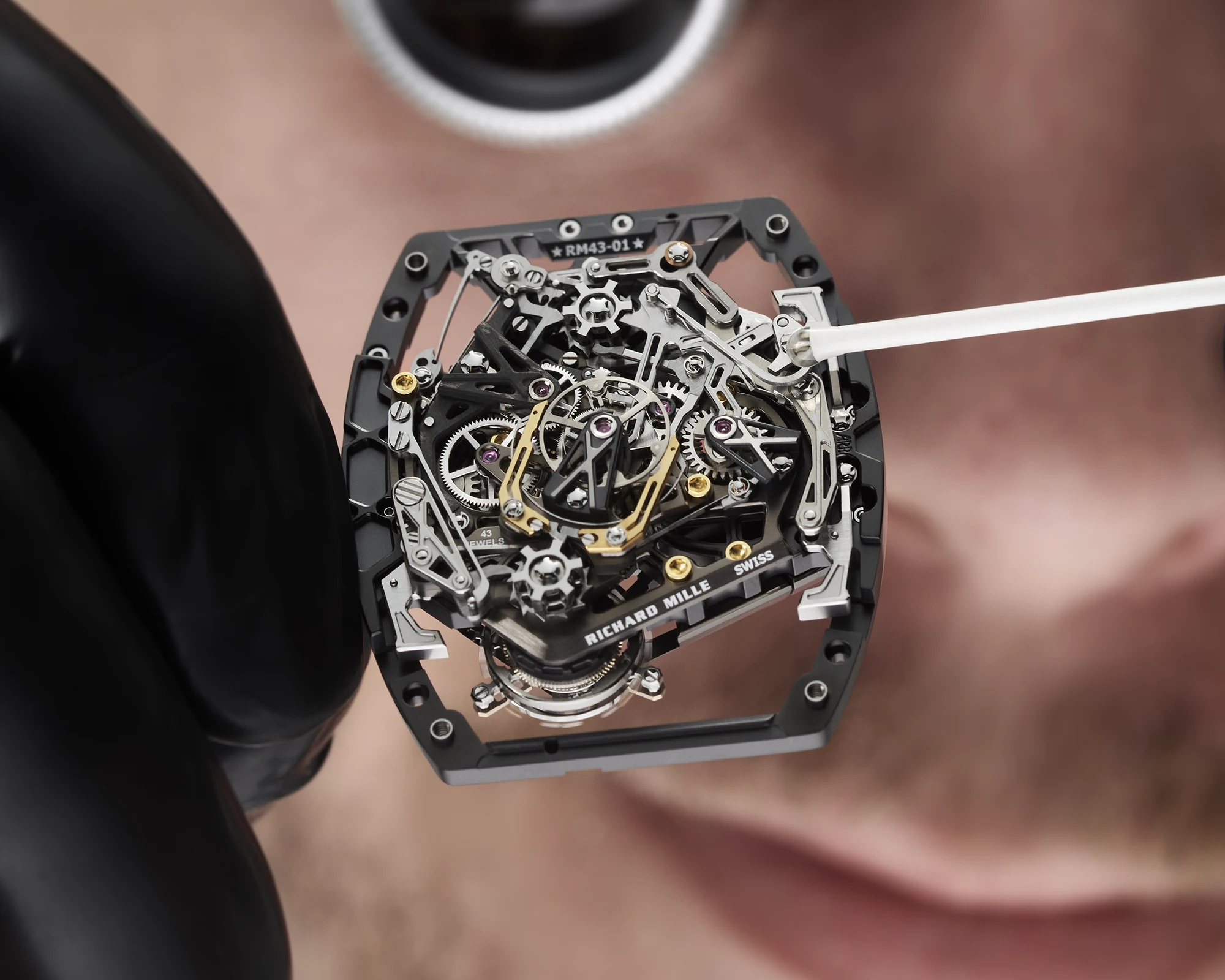
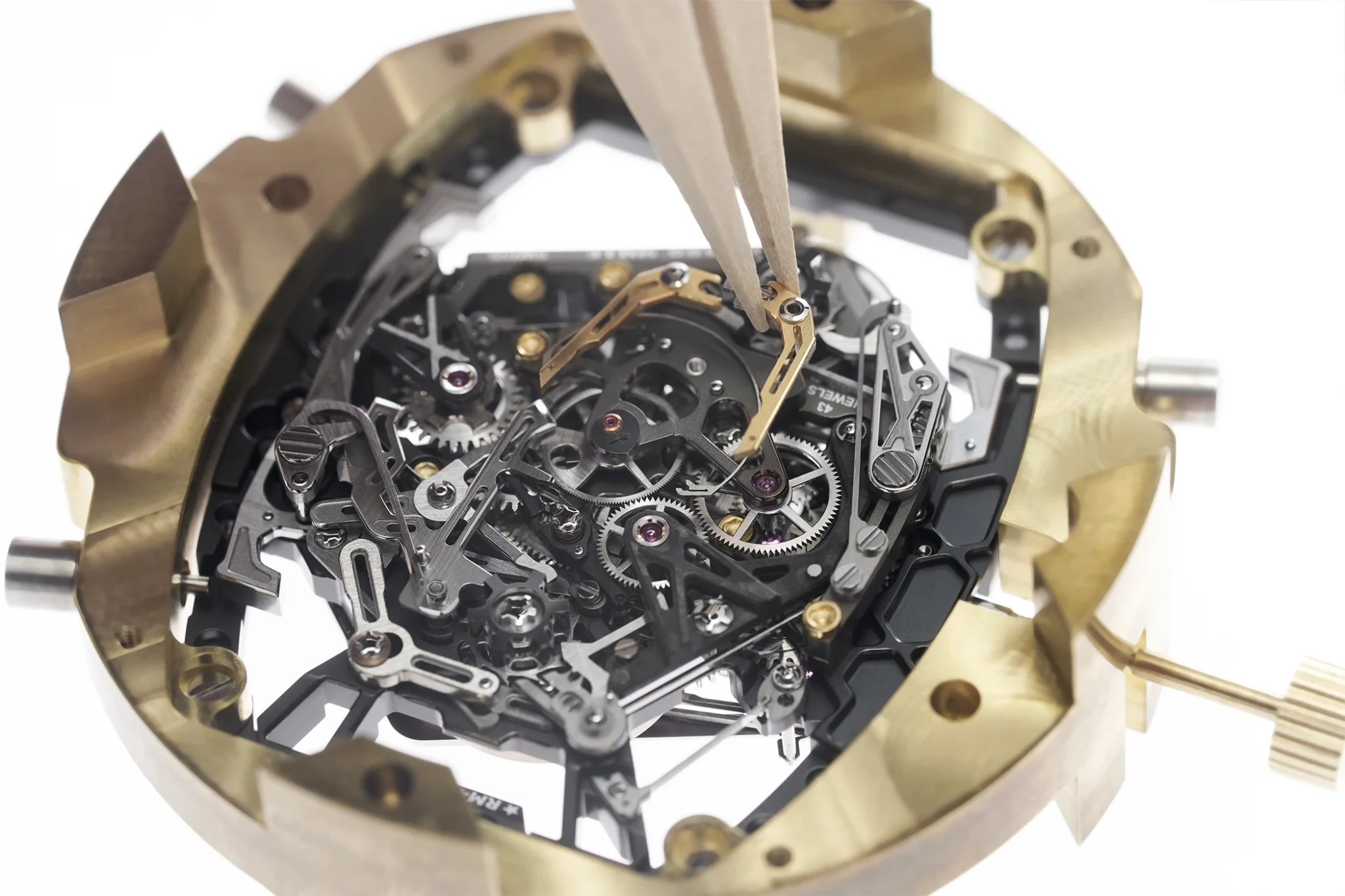
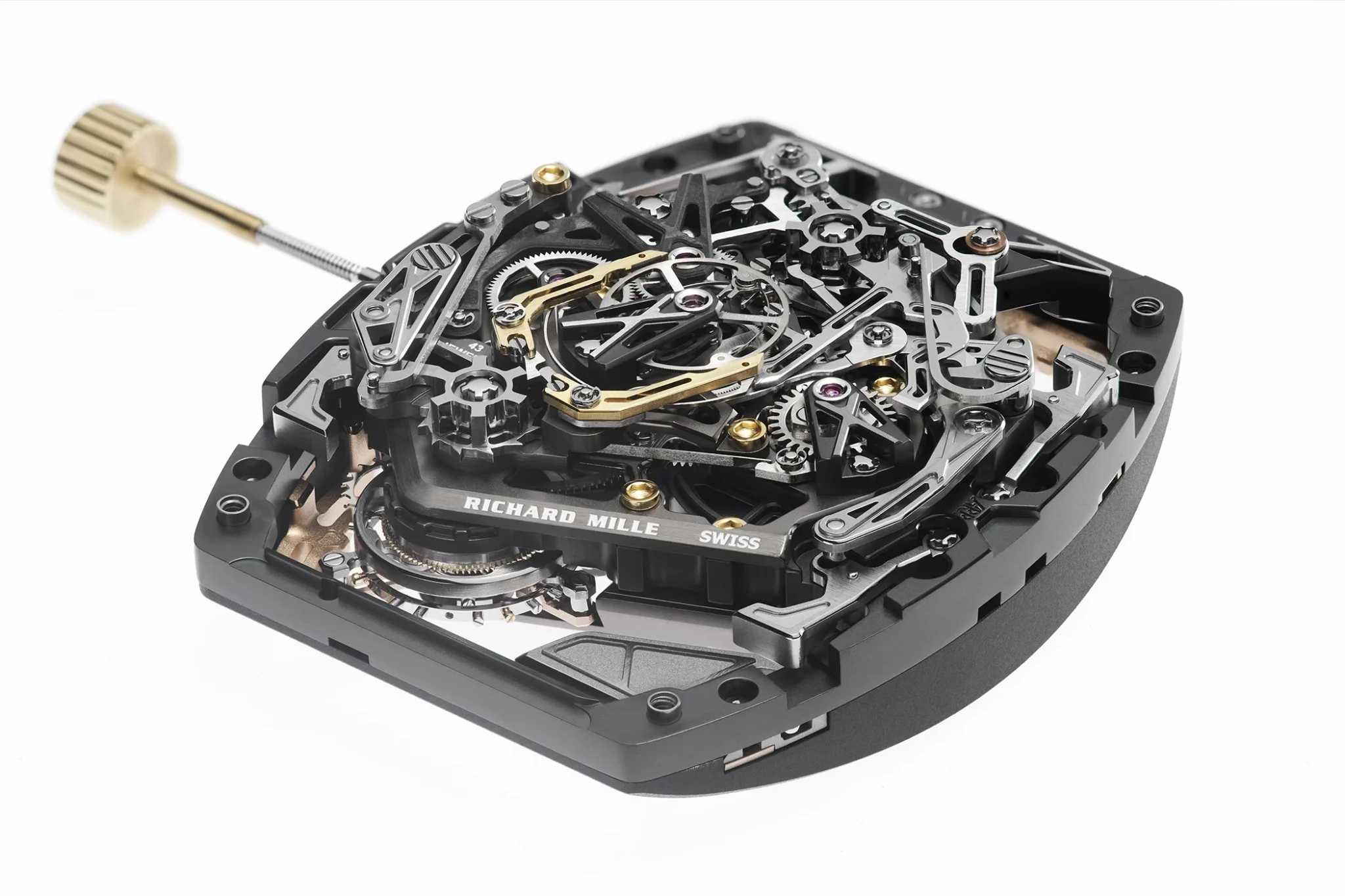
All of these refinements contribute to the RM 43-01’s remarkable precision, with the chronograph consuming only half as much energy, thanks to reduced friction. The result is a power reserve of approximately 70 hours, although this duration depends on how often and for how long the chronograph function is engaged. A look through the open caseback is equally rewarding: one can admire the finely finished components of the movement, including hand-polished bevels, microblasted steel surfaces, and wheels meticulously finished using diamond tools.
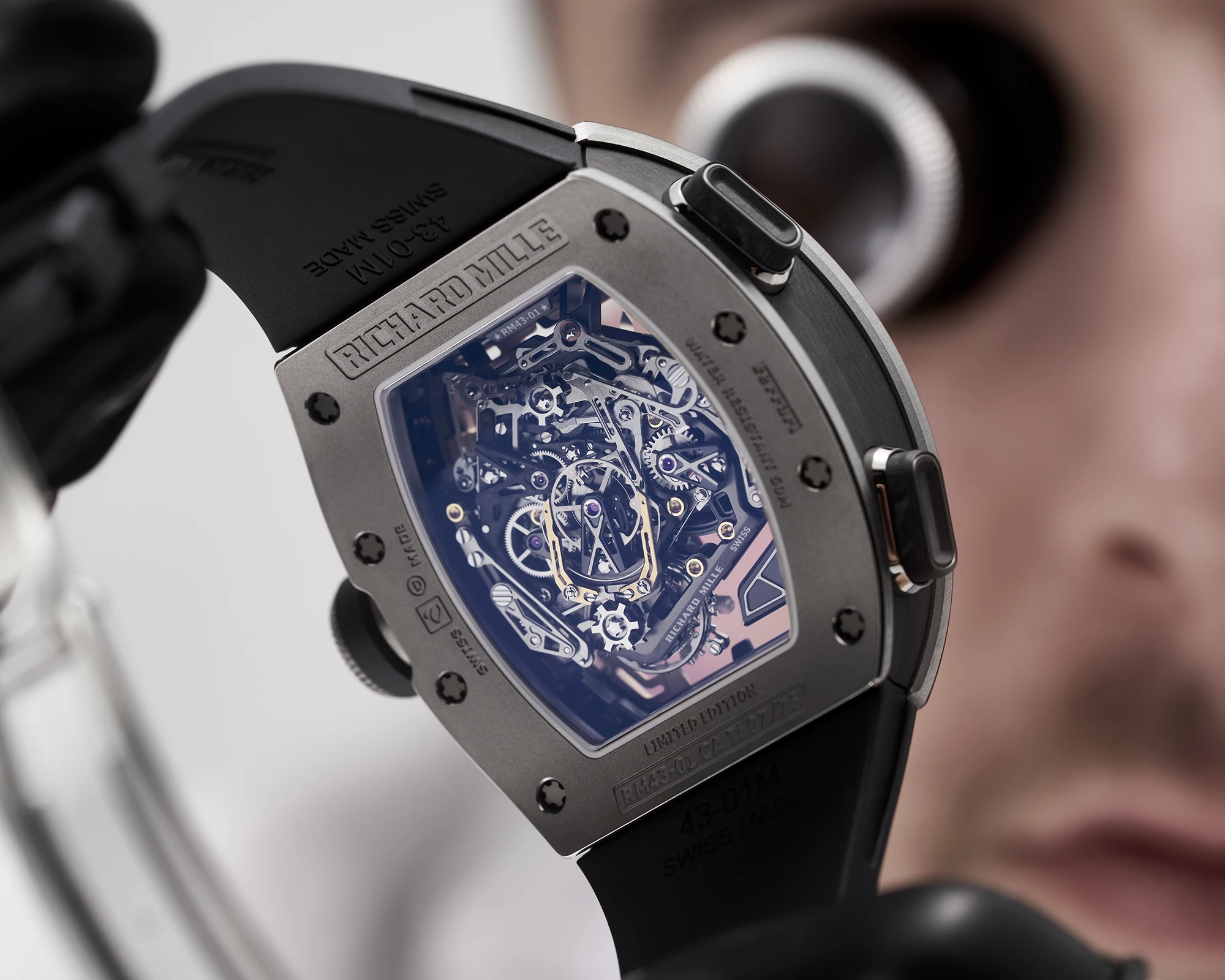
The Dial Design
The dial of the new RM 43-01 benefits from the light yet robust architecture of its movement, built on a highly skeletonised baseplate made of grade-5 titanium. This design offers a deep and captivating view into the mechanics of the watch. While the Carbon TPT version showcases a harmonious interplay of grey and yellow accents, the titanium variant features an especially well-executed combination of beige and red highlights. These colour details are most prominent at several key points on the dial.
Between 10 and 12 o’clock, the power reserve indicator reveals how much energy remains available to the movement. Opposite this, from 12 to 2 o’clock, sits the torque indicator, providing insight into the quality of the energy being supplied. At 3 o’clock, a further display — reminiscent of a gear selector — shows the function currently selected via the crown. Here, ‘W’ stands for ‘Winding’, ‘N’ for ‘Neutral’ (the resting position), and ‘H’ for ‘Hands’ (time-setting mode).

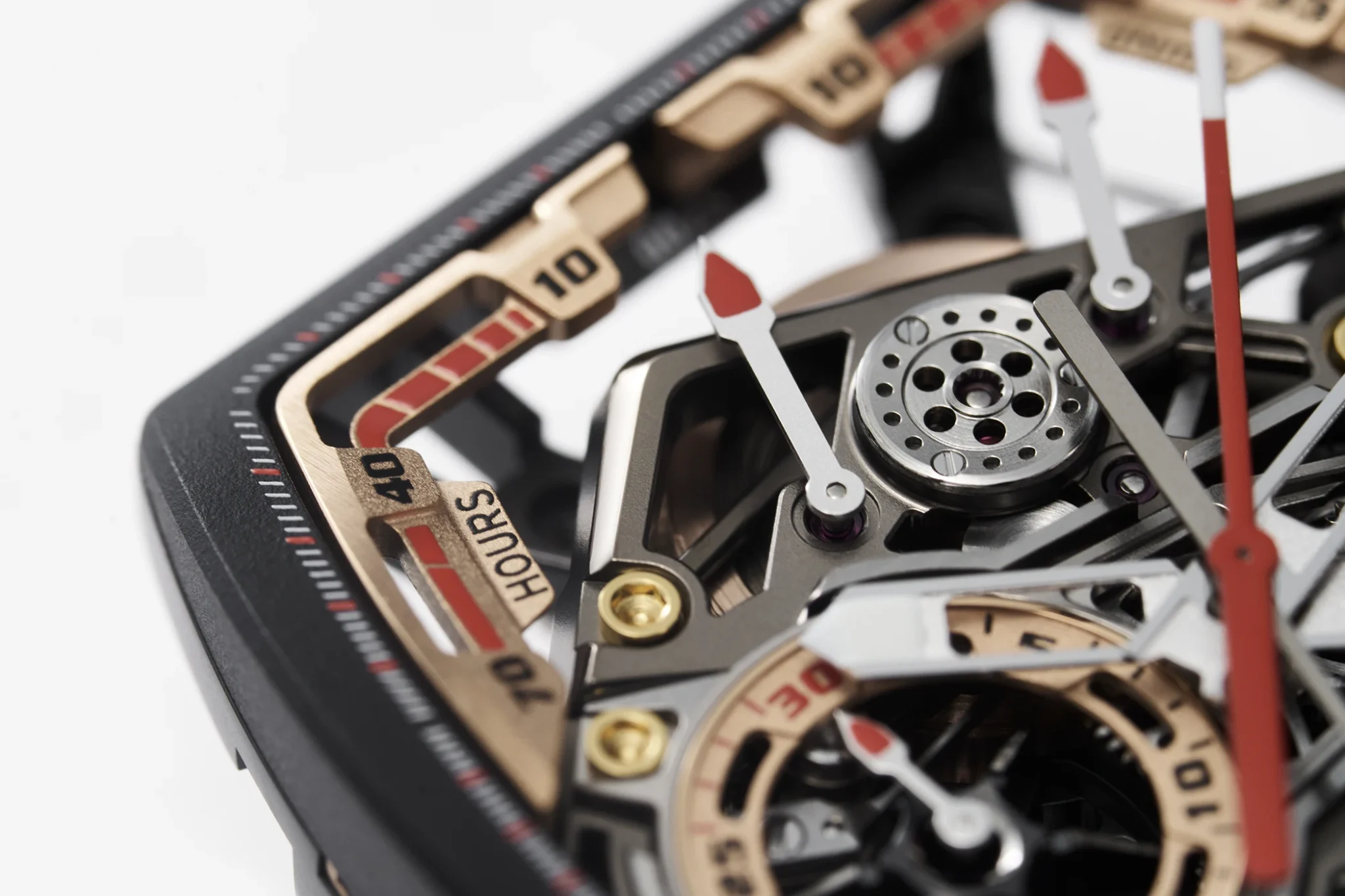
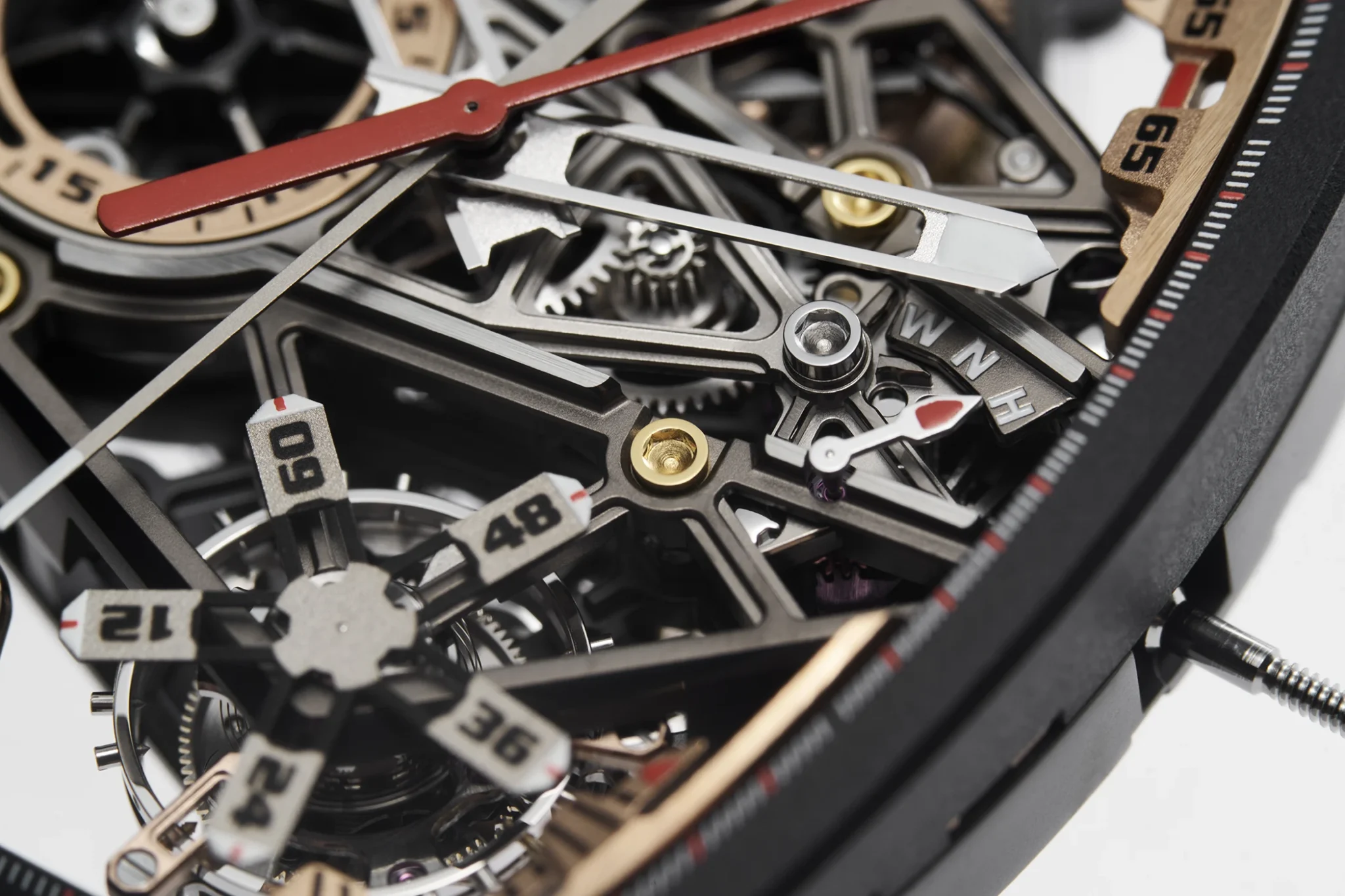
The design elements of the dial are heavily influenced by the Centro Stile Ferrari, with visual cues drawn from the world of the automotive manufacturer present throughout. For instance, the skeletonised 30-minute counter at 9 o’clock is a clear homage to the tachometer that dominates the dashboard of modern Ferrari models.
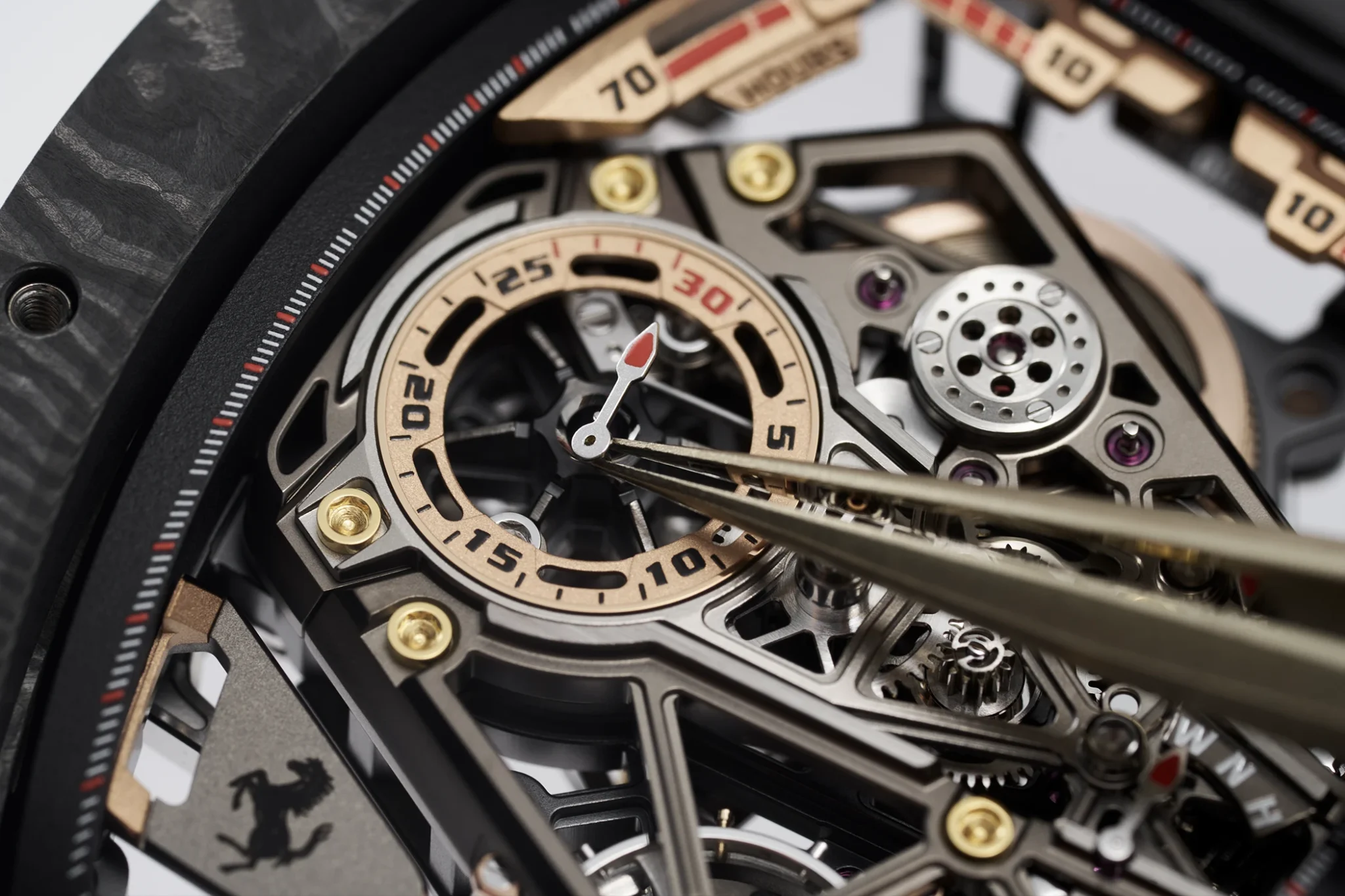
Special attention is given to the 5 o’clock position, where the tourbillon — the undisputed star of the RM 43-01 — is placed. At Richard Mille, the tourbillon is not only a technical showcase but also a key pillar of the brand’s identity. It features even in sport watches, despite the tourbillon traditionally being considered a delicate component. With models such as the RM 009 Felipe Massa Tourbillon, which weighed just 29 grams without its strap and set a world record at the time, the brand dispelled any lingering doubts. This paved the way for ultra-light tourbillon watches that have since become synonymous with Richard Mille. The production of a tourbillon is considered to be particularly complex in watchmaking. To achieve near perfection, three dedicated watchmakers work on a single tourbillon for an average of three months, each following their creation from concept to completion.
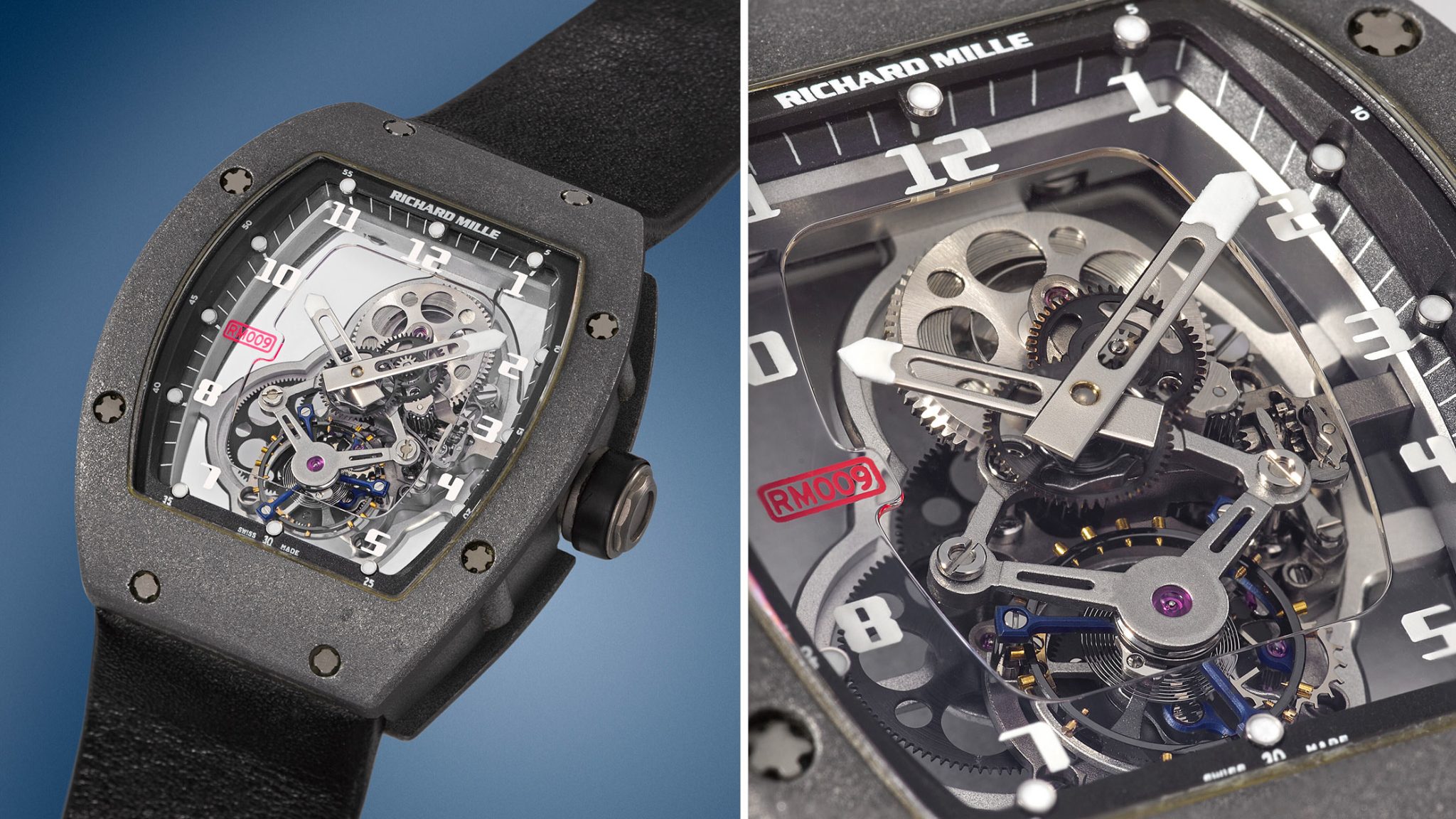
In the case of the Richard Mille RM 43-01 Tourbillon Split-Seconds Chronograph Ferrari, the tourbillon is positioned off-centre and encased in a titanium cage, lending the movement a distinctive sense of dynamism. This effect is further enhanced by an innovative seconds display: five rotating segments that revolve in tandem with the tourbillon, each marking increments of 12 seconds, completing a full rotation of 60 seconds. This movement makes reading the display particularly vivid and engaging. The tourbillon itself is supported by bridges crafted from titanium and Carbon TPT, both of which are visible on the dial side.
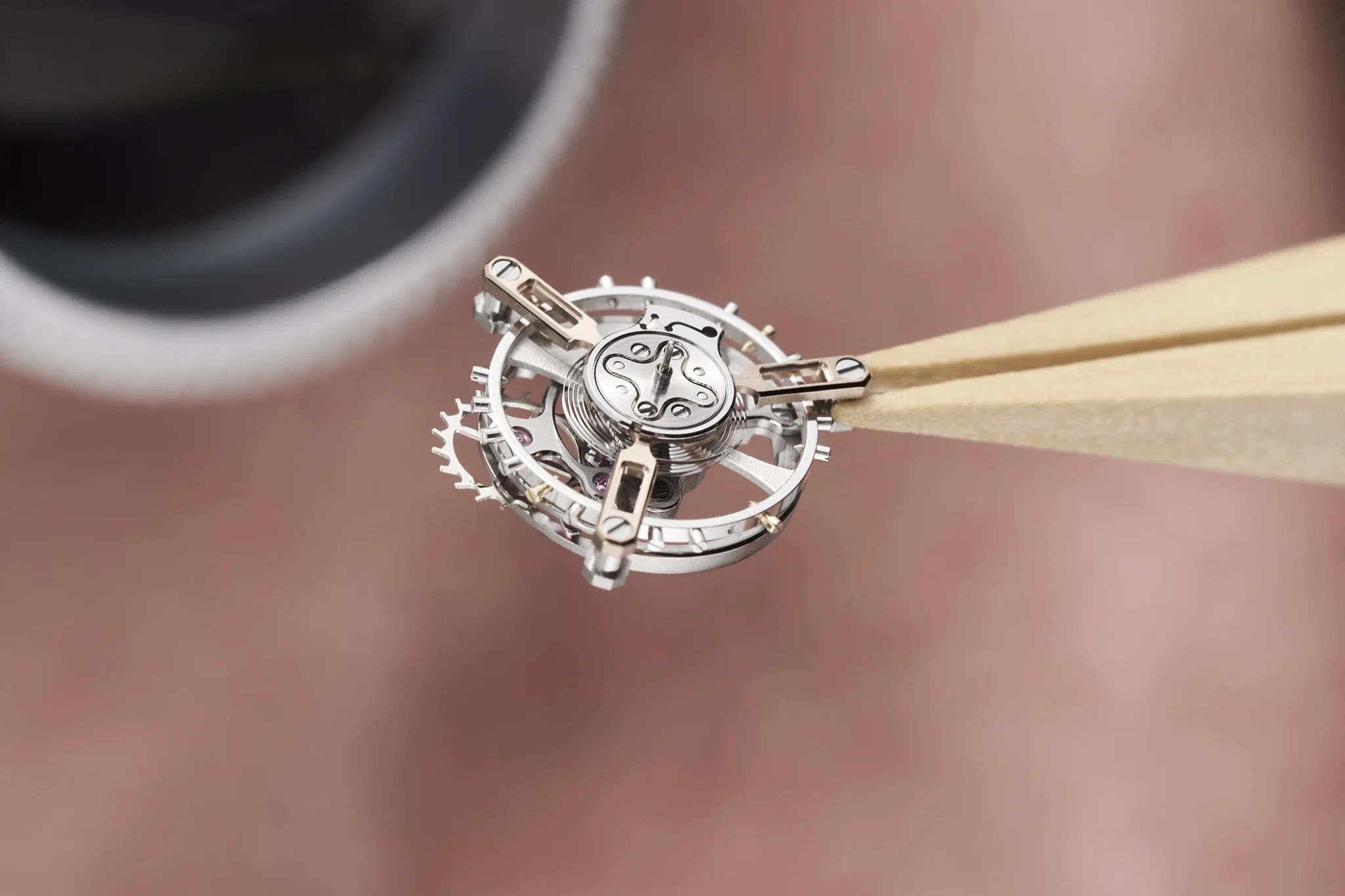
The Case of the Richard Mille RM 43-01 Tourbillon Split-Seconds Chronograph Ferrari
The official presentation of the model reveals that the latest collaboration between Richard Mille and Ferrari follows two distinct case design concepts — as emphasised by case director Julien Boillat. These not only define the visual identity of the watches but also reflect two different personalities. According to Boillat, the two models embody “a gentleman driver mentality in the titanium version and a powerful, dynamic presence in the carbon variant.”
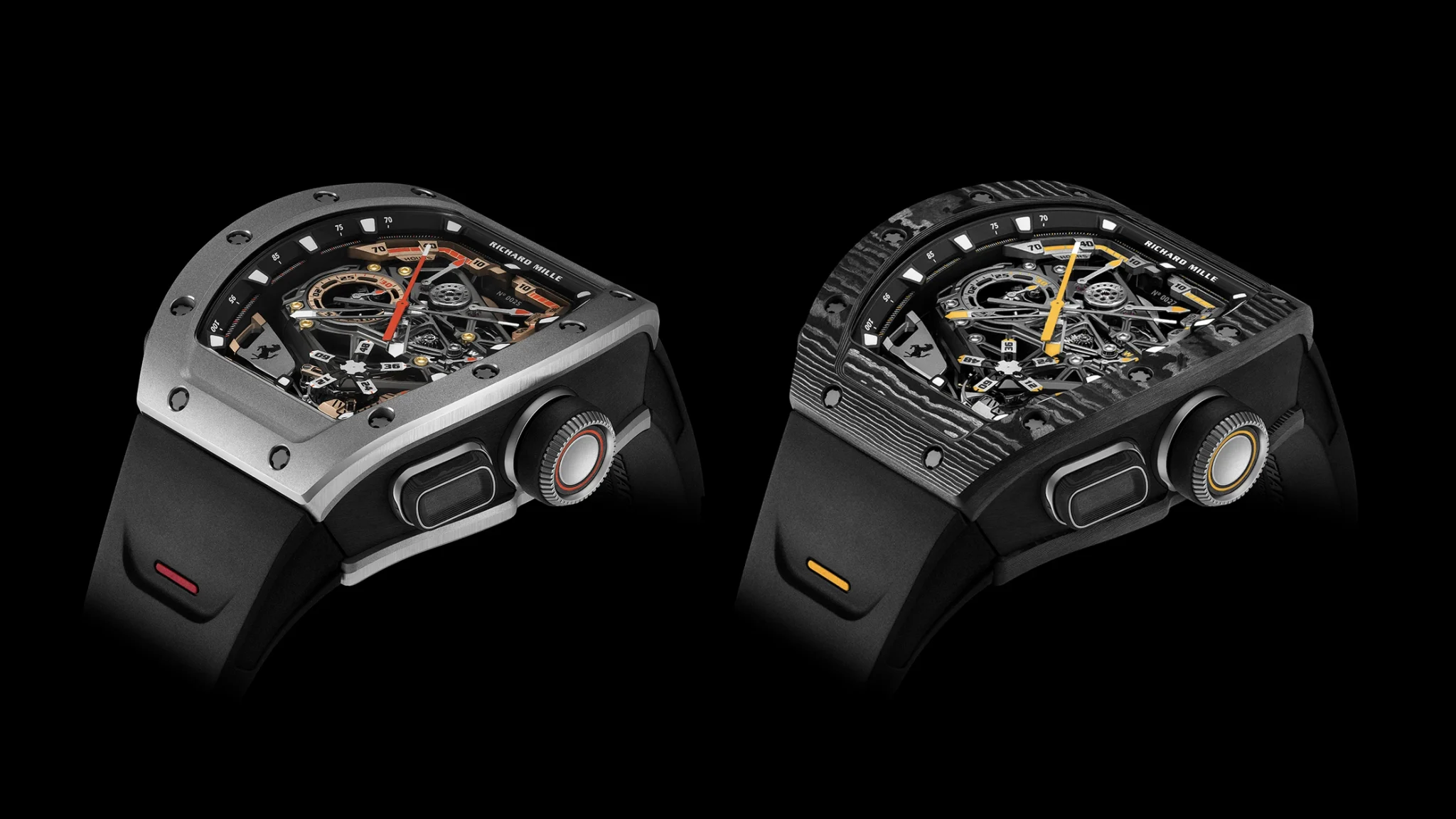
The first iteration of the RM 43-01 Tourbillon Split-Seconds Chronograph Ferrari features microblasted and polished grade-5 titanium, combined with a caseband made of Carbon TPT. The second version, by contrast, is crafted entirely from Carbon TPT — a lightweight yet remarkably resilient composite material used exclusively by Richard Mille.
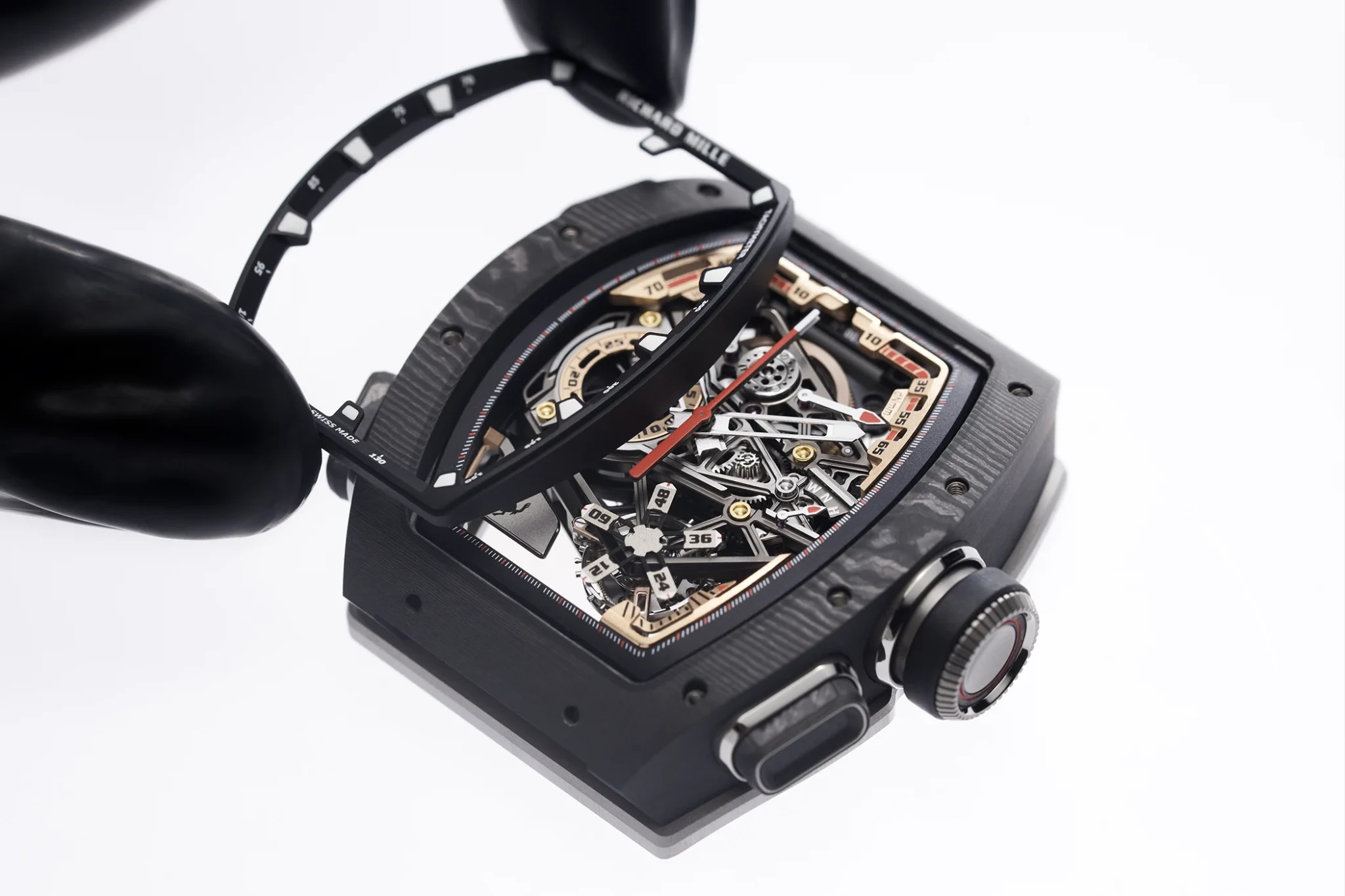
Carbon TPT is renowned for its distinctive structure and unique finish. It is created by layering hundreds of ultra-thin sheets of carbon fibre (each no more than 30 microns thick) in an automated process where the orientation of the fibres is varied between layers. The material is then hardened in an autoclave — similar to those used in the aerospace industry — at a pressure of 6 bar and a temperature of 120 °C. Only after this process is it machined by Richard Mille into cases and pushers.
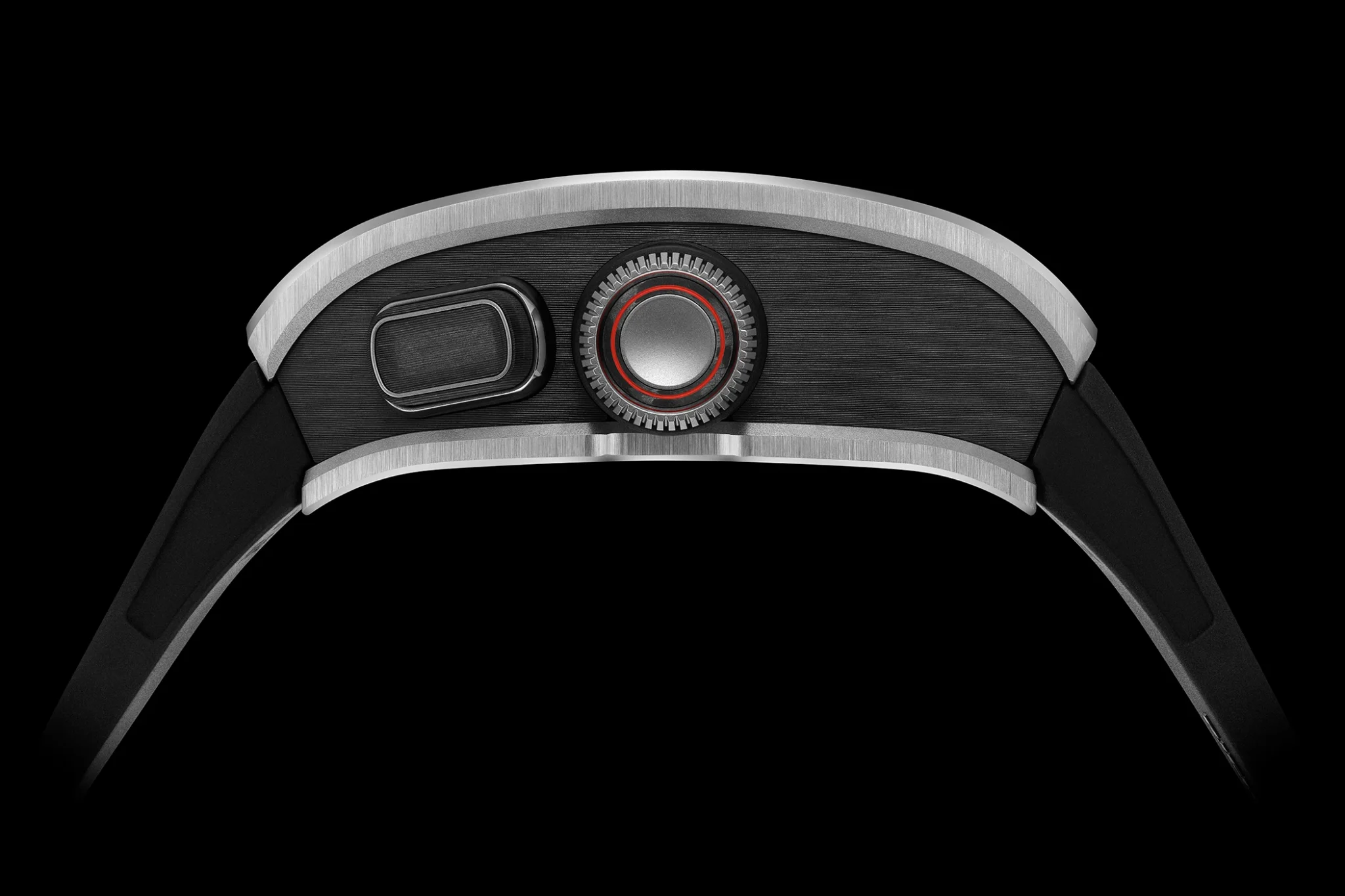
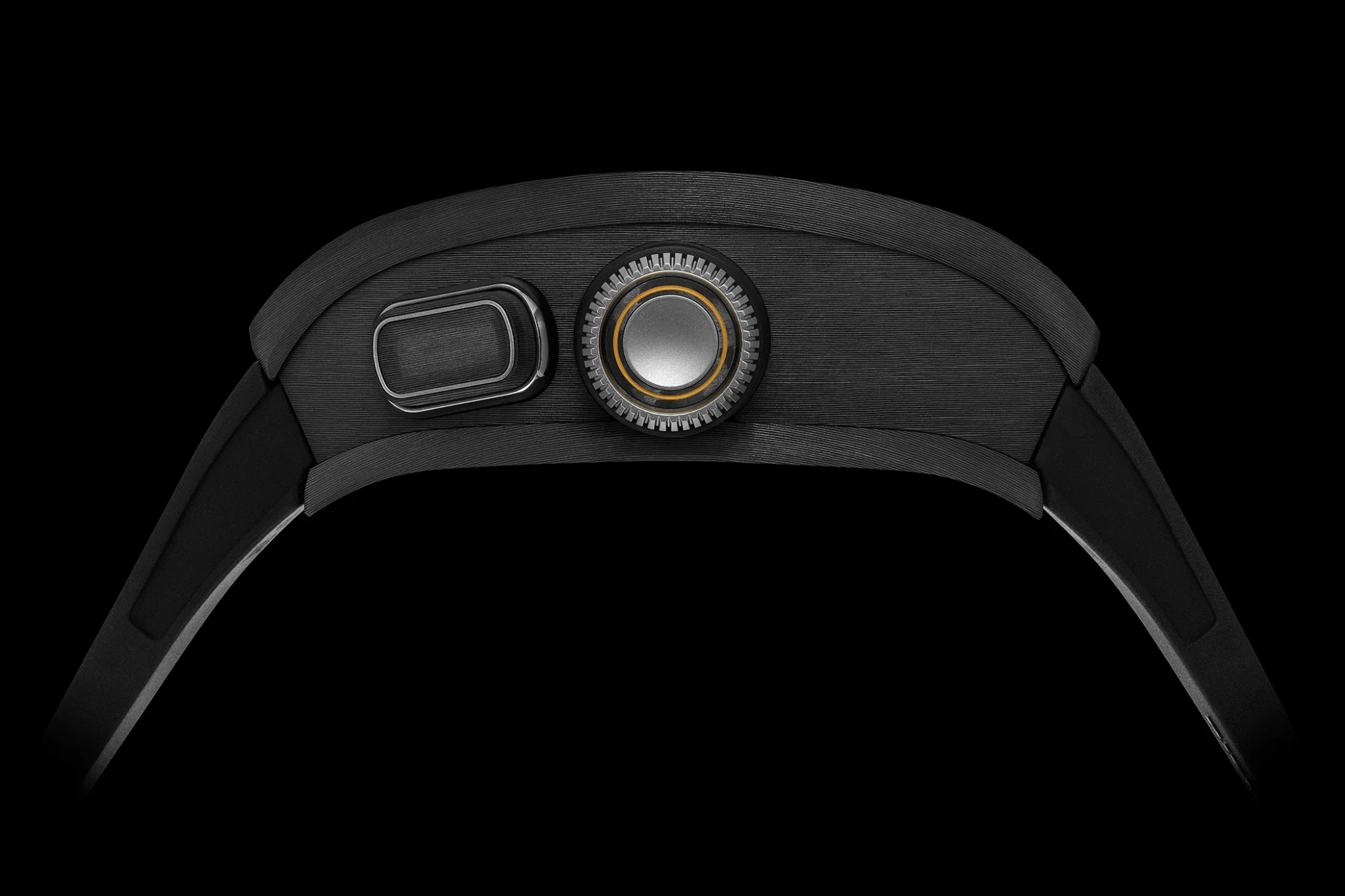
Unlike the RM UP-01, the new RM 43-01 showcases far more explicit design elements inspired by Ferrari’s racing cars. The entire case design draws from Ferrari’s stylistic universe. From the overall shape to finer details such as the crown, the hands, and even the strap — which features a pattern reminiscent of the seats in the Ferrari Purosangue — the influence of the Italian marque is ever-present. Dynamic, angular design cues taken from models such as the Ferrari 488 Challenge Evo, Daytona SP3, and SF90 Stradale have also been incorporated into the case, pushers, and indexes.
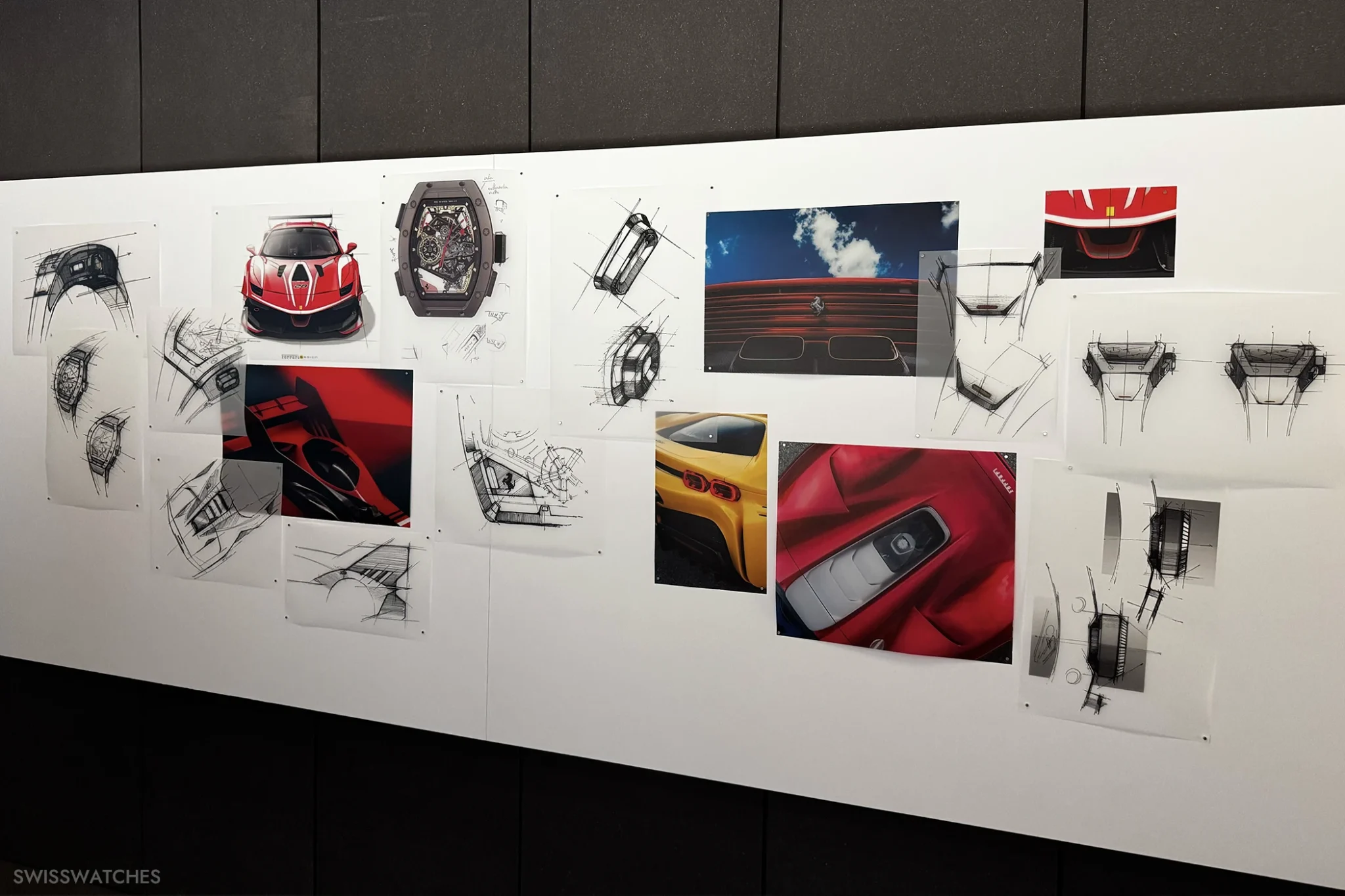
The dimensions of both case versions measure 51.2 mm in length, 42.9 mm in width, and 17.10 mm in height. The case structure is composed of three parts and is water-resistant to a depth of 50 metres, thanks to two Nitrile O-ring seals. It is assembled with 20 signature Richard Mille spline screws, all made from grade-5 titanium.
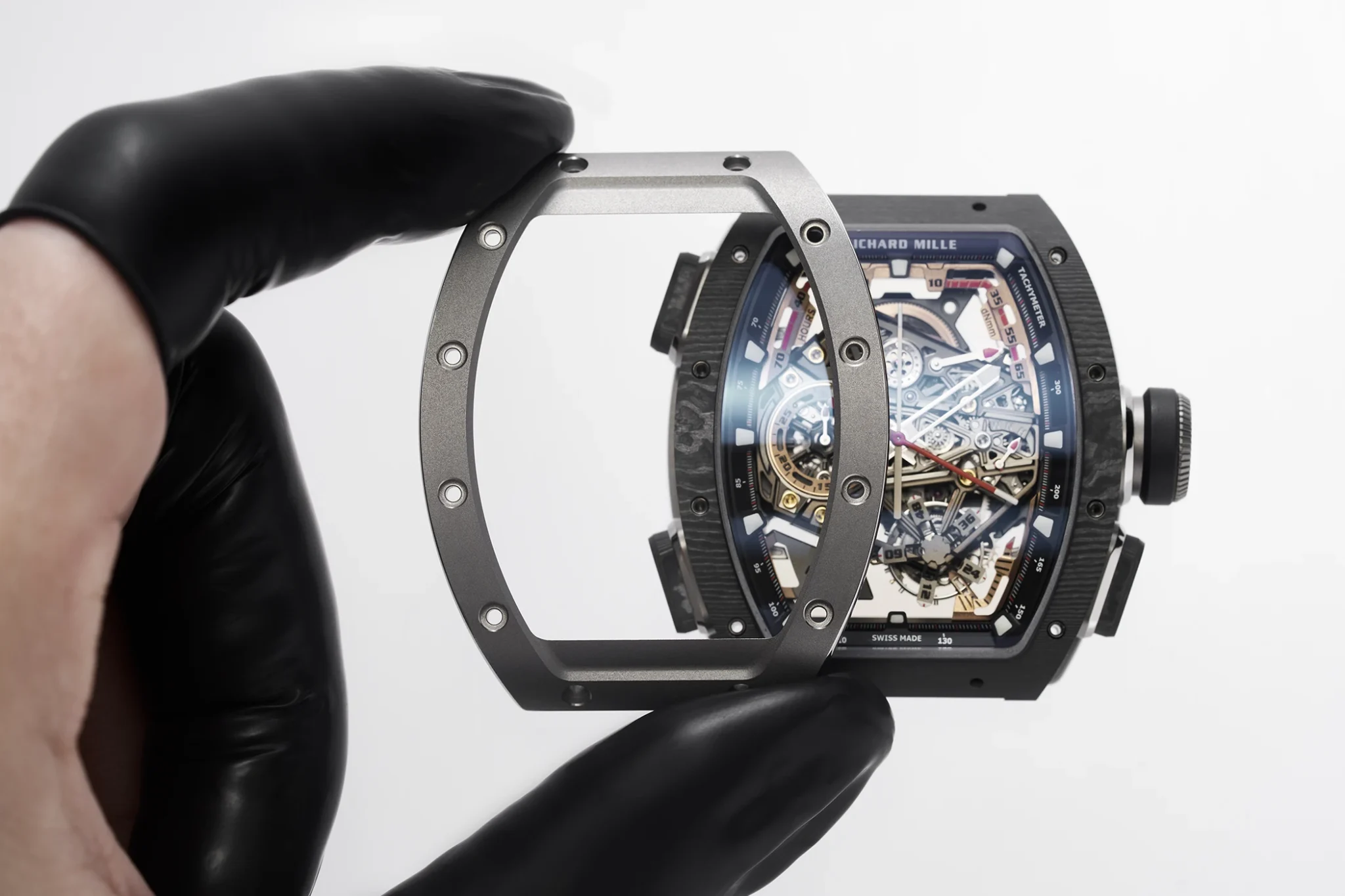
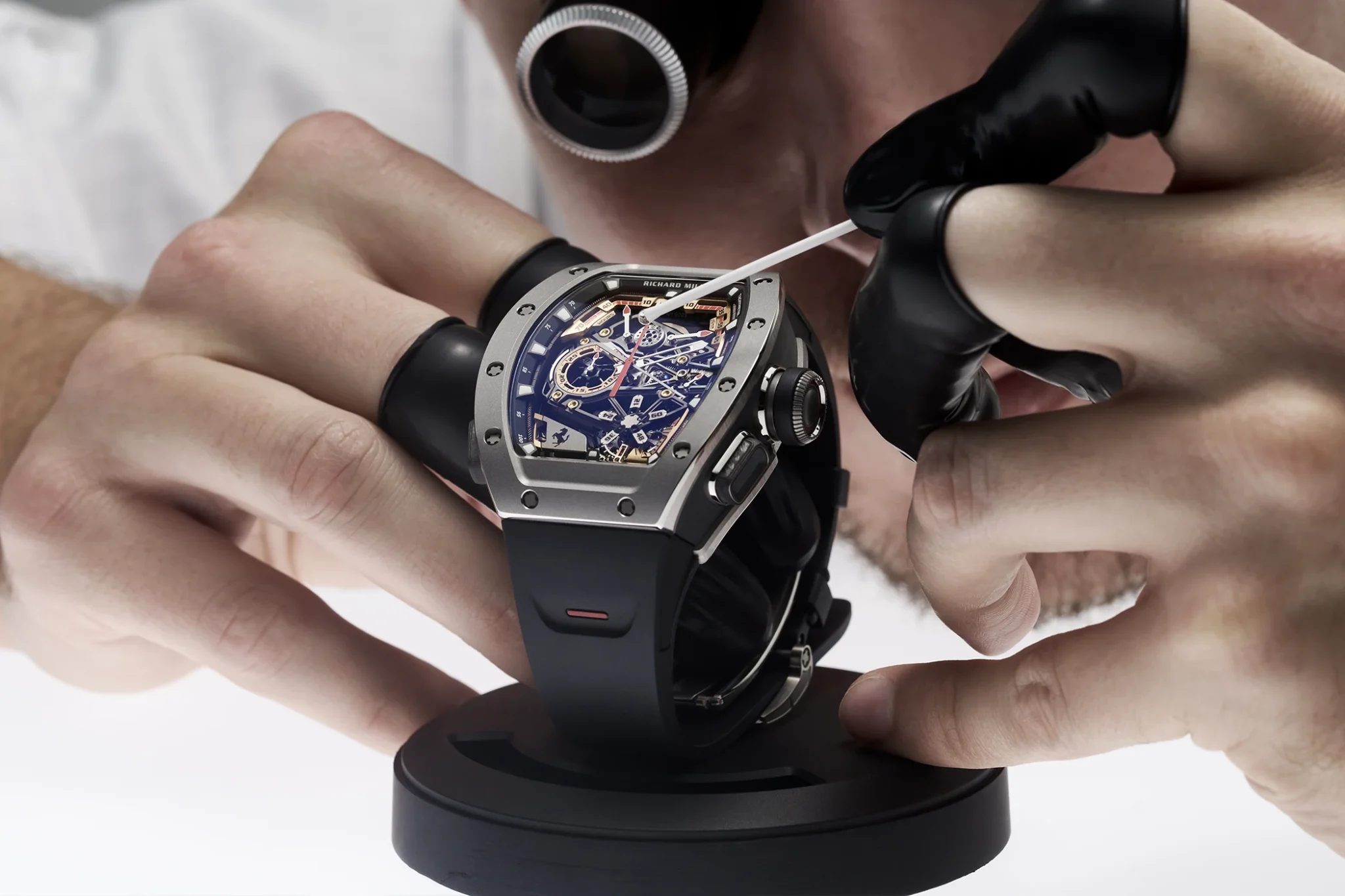
Why the Collaboration Between Ferrari and Richard Mille Makes Sense
The reasons why this partnership works so well can be found in the histories of both companies. Each brand draws upon time-honoured traditions and craftsmanship in its respective field, but both have also evolved by introducing fresh concepts and integrating cutting-edge technology — shaping not only the aesthetics but also the technical sophistication of their products today.
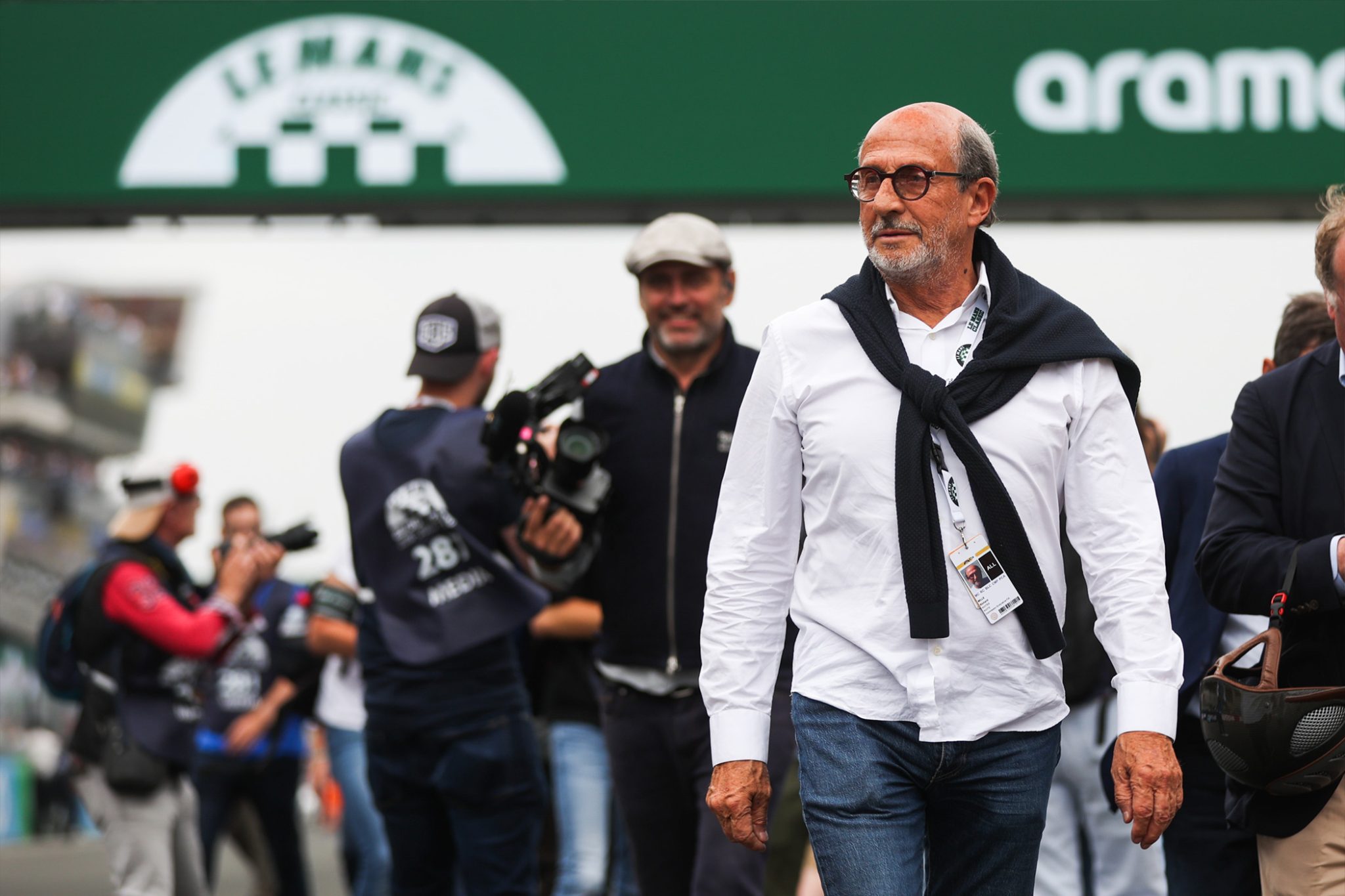
Richard Mille’s story began in 2001, when the brand launched its first watch, the RM 001, featuring a tourbillon regulator and carrying a six-figure price tag. With this bold move, the brand made a striking debut and instantly set itself apart. Ferrari, too, broke with conventions early in its history. While most manufacturers focused on producing purely road-going vehicles, Ferrari’s core philosophy revolved around building race cars with road approval — machines defined by pure performance and technical precision, designed for enthusiasts who sought the thrill of the racetrack on everyday roads.
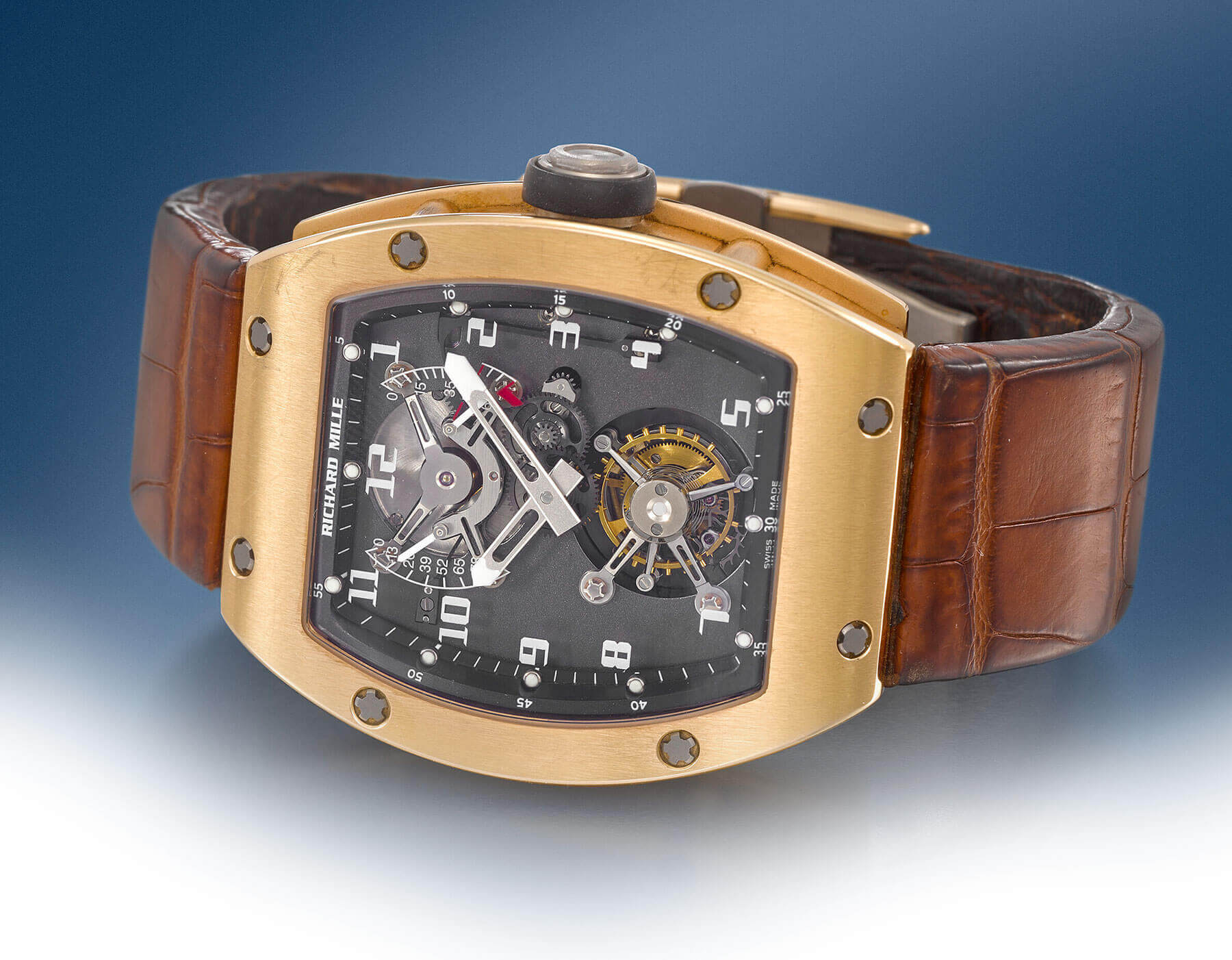
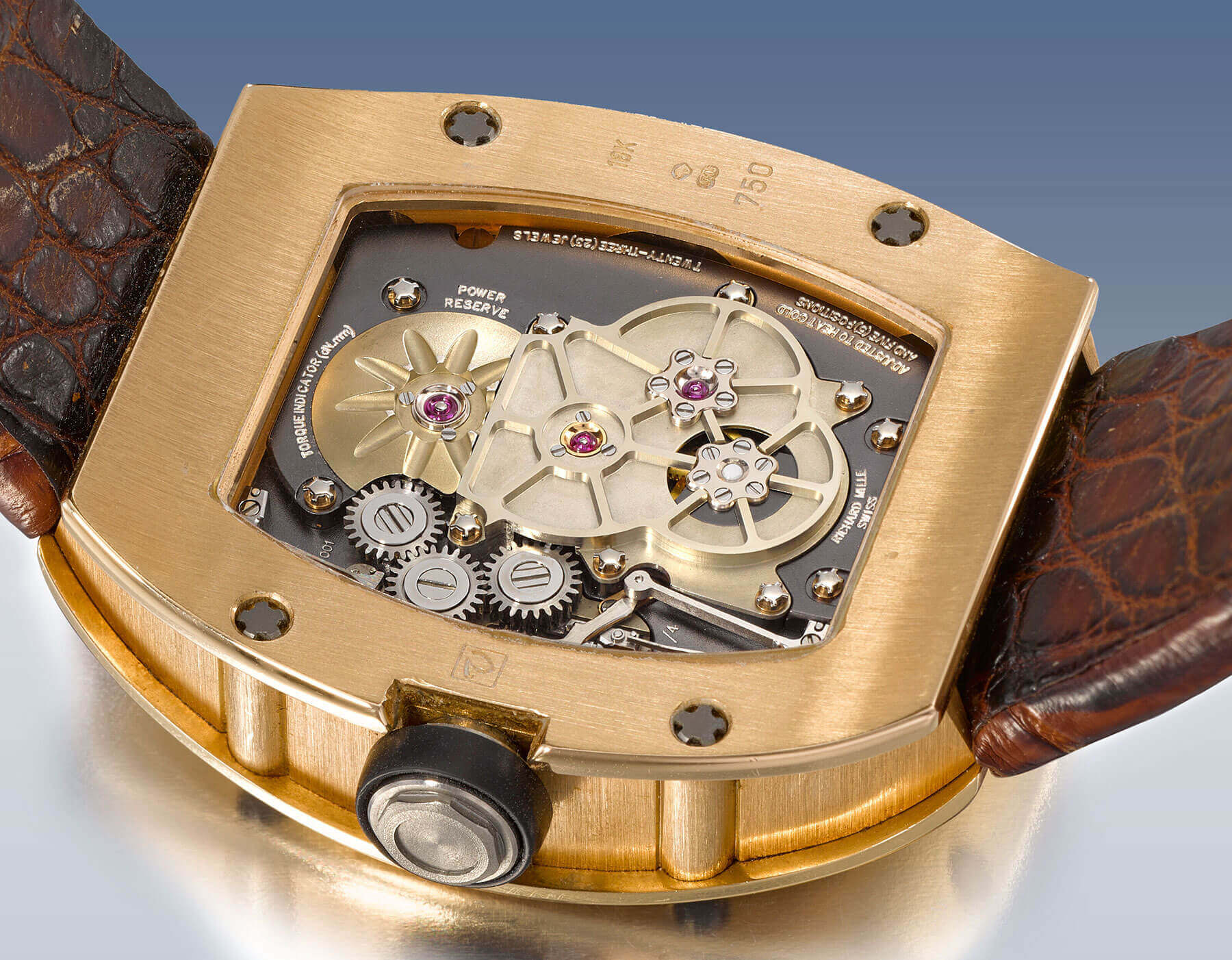
A prime example of both brands breaking conventions is the RM UP-01, the first watch created in collaboration with Ferrari. Not only did this model challenge Richard Mille’s established design codes with its highly technical appearance, but it also set a world record as the thinnest mechanical watch of its time, with a case thickness of just 1.75 mm. To achieve this, Richard Mille’s engineers combined an ultra-thin escapement with a titanium balance wheel featuring a variable moment of inertia. The extra-flat barrel with a uniquely designed mainspring was even submitted for patent protection. The hands of the watch were mounted directly onto the wheels, reducing the overall height.
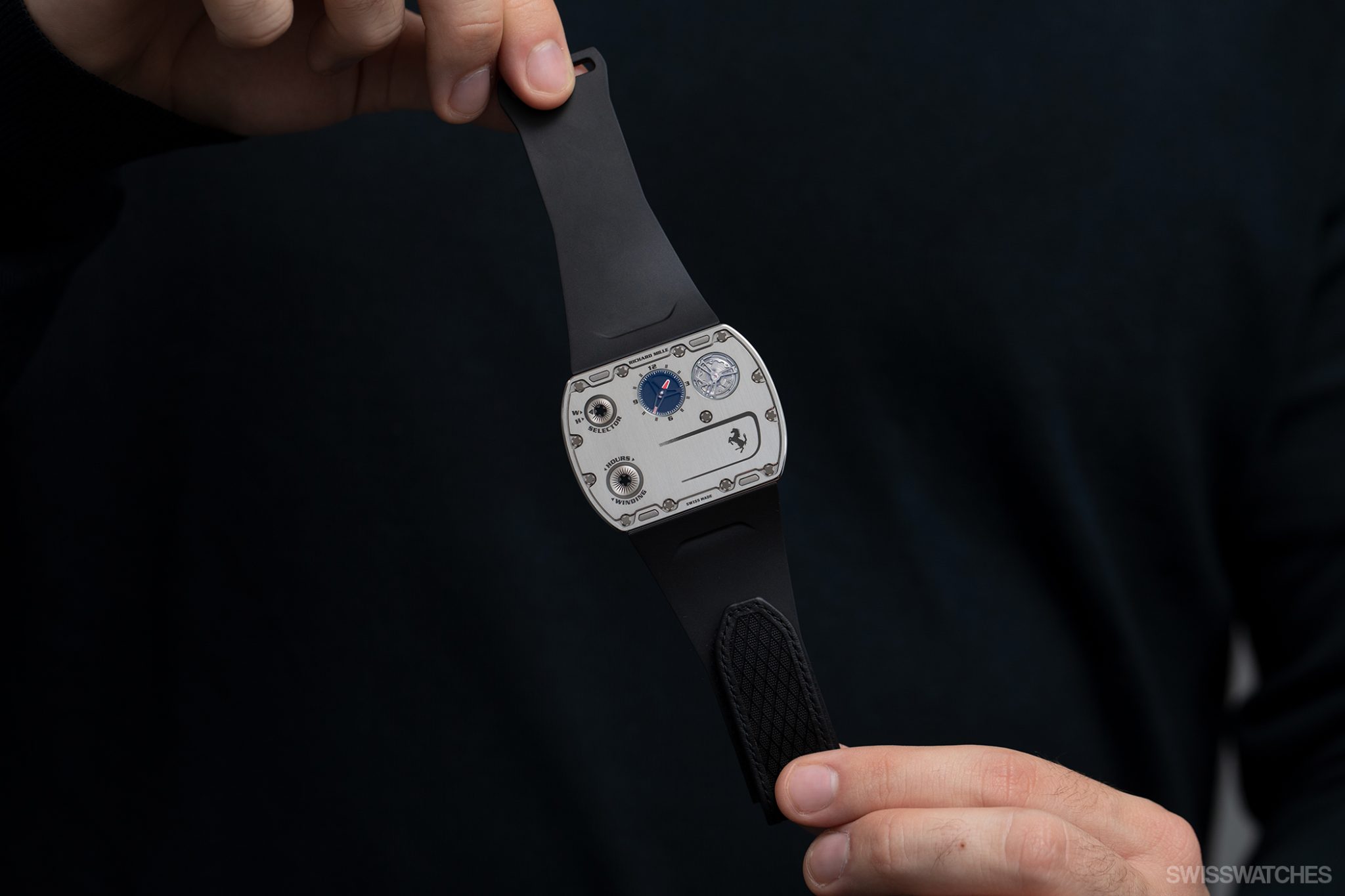
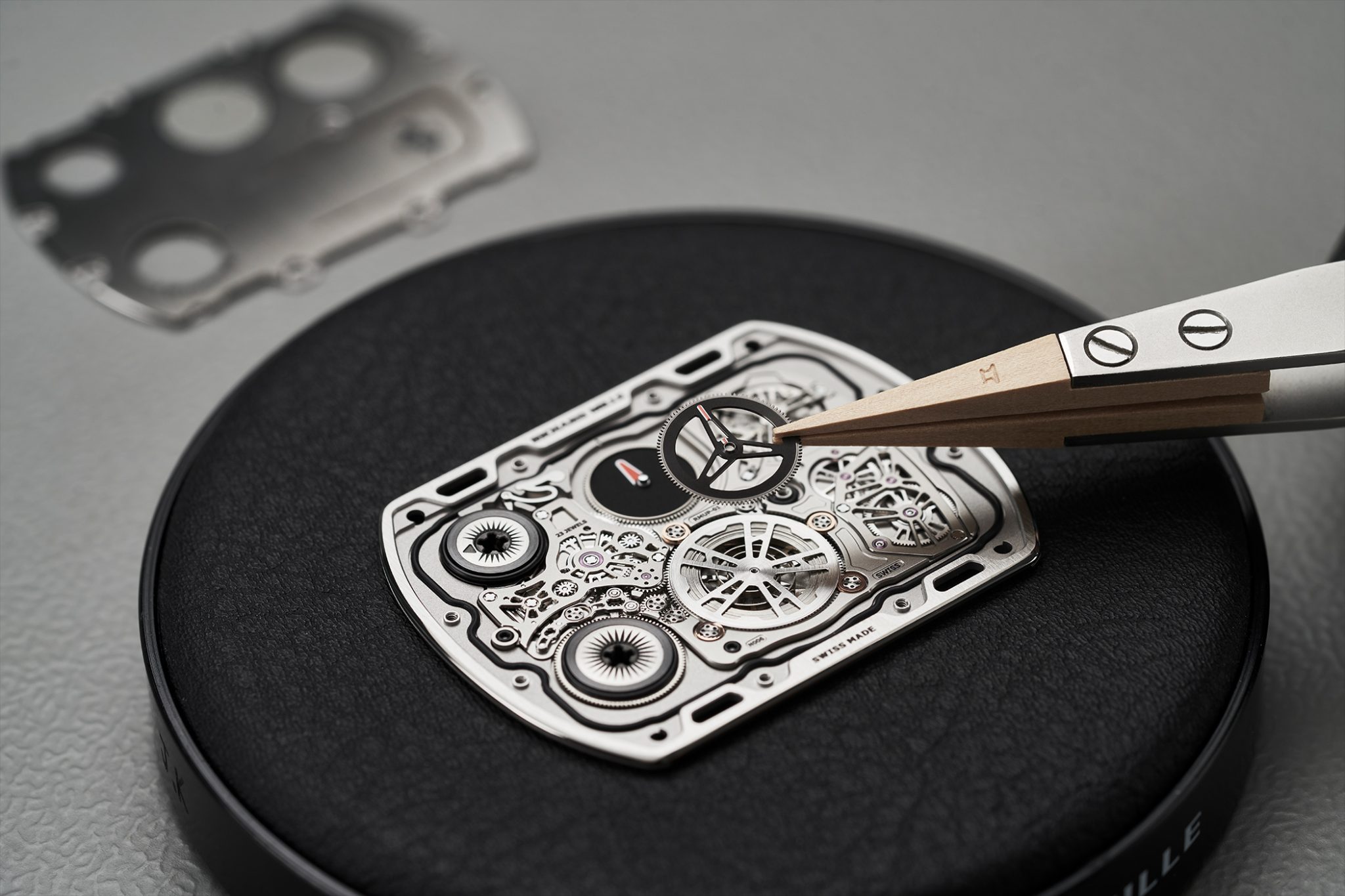
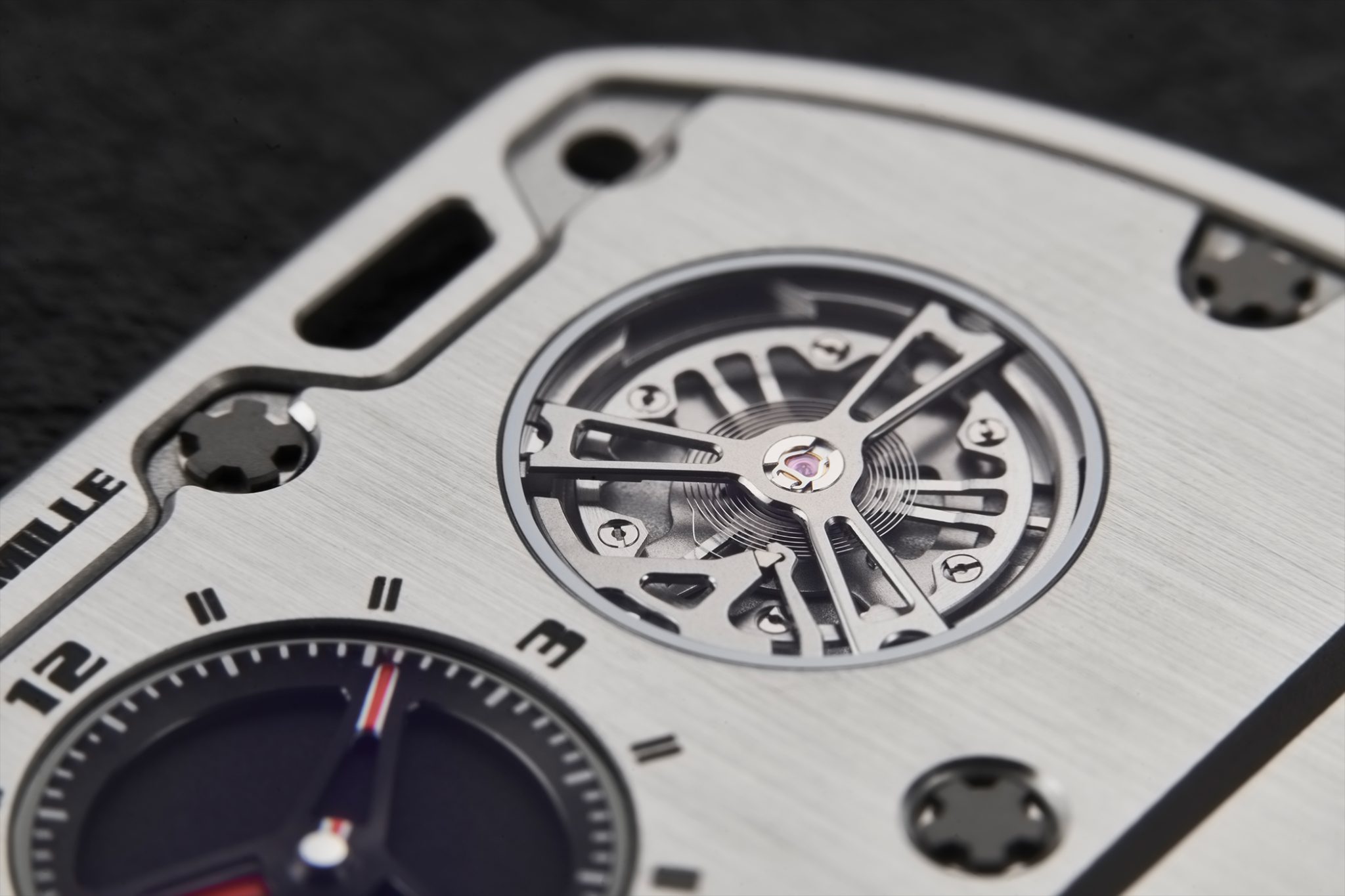
Today, both Richard Mille timepieces and Ferrari cars are far more than functional instruments. Through the use of extraordinary materials, exceptional craftsmanship, and — naturally — equally exceptional price points, they have become recognisable status symbols. Each follows a strict design philosophy, making them instantly identifiable. Richard Mille also notes that there is a significant overlap between Ferrari owners and those who purchase Richard Mille watches.
Price & Availability
The Richard Mille RM 43-01 Tourbillon Split-Seconds Chronograph Ferrari is limited to just 150 pieces in total — 75 in grade-5 titanium and another 75 in Carbon TPT®. The price for the Carbon TPT version is set at CHF 1,350,000, while the titanium model is offered at CHF 1,150,000. According to Richard Mille, 30 pieces have been produced to date, with the remaining 120 scheduled for production throughout this year and the next, with final deliveries expected by 2026.
